-
PILOT SHORTAGE: IN THE NEWS

In the last two years, more than 320 airports in the U.S. have lost air service, with over 150 of them losing more than a quarter of their service as a result of the pilot shortage. We have been actively using our platform to keep a spotlight on the issue and to help raise awareness. As the problem persists, we’re seeing news outlets bring increasing attention to the challenges we are all facing as industry players and travelers.
While the pilot shortage is leaving a gaping hole in the industry, the shortage is showing to have disproportionate effects on regional airlines and larger airlines. Flight Global covered a story on how the pilot shortage is currently eroding U.S. discounters’ low-cost edge in the market, while consequently improving the competitive position of much larger airlines.
A GLOBAL ISSUE
But the problem isn’t just being felt in the U.S. According to Transport Canada, approximately 1,100 pilot licenses were issued each year before the pandemic hit. When this number was complemented by foreign-trained pilots, the number of pilots available was more than enough to satisfy the needs of not just the large carriers like WestJet and Air Canada, but also the regional, charter and cargo airlines.
However, CBC News reported some staggering numbers that really illustrate the issue at hand. As the demand for air travel practically ground to a halt in 2020, so did the number of licenses being issued to new pilots. Government data revealed that fewer than 500 licenses were awarded in Canada in 2020, which then dropped even lower to under 300 in 2021, and just a mere 238 in 2022.Even with this data in hand, "there aren’t enough people starting up at the bottom of the scale to get people interested in flying," John Gradek, a lecturer in aviation management at McGill University in Montreal, told CTV News. With costs as high as $100,000 or more to train as a pilot in Canada, paired with little to no financial aid available to students, the problem doesn’t show signs of slowing down.
"This is why we’re advocating for governments to start subsidized pilot training. We’re talking about getting flight training funded the same way other more traditional college degrees get funded,” MHIRJ’s own Ross Mitchell explained in a recent interview.A WIDENING GAP
Although air travel has since bounced back following the pandemic, many airlines continue to struggle to bring enough pilots back into the mix. A 2022 analysis by the consulting firm Oliver Wyman estimates that the U.S. airline industry is lacking around 8,000 pilots. They also project that the situation will continue to worsen over the next decade as the ever-increasing demand continues to overtake the number of new pilots entering the industry—despite the expectation that the supply of new commercial pilots is expected to pick up over the next few years.
However, with the way things stand now, the increased supply can’t possibly meet the demand. As a result, it’s expected that North America will be short nearly 30,000 pilots by 2032.
As travelers continue to feel the frustrations of canceled flights, and the industry feels the strain of grounded planes and schedule cutbacks, we’ll continue to help increase media coverage on the issue, share the latest developments with our community, and rally for change alongside our industry partners.
5 MIN.- Log in to post comments
PILOT SHORTAGE: IN THE NEWS

In the last two years, more than 320 airports in the U.S. have lost air service, with over 150 of them losing more than a quarter of their service as a result of the pilot shortage. We have been actively using our platform to keep a spotlight on the issue and to help raise awareness. As the problem persists, we’re seeing news outlets bring increasing attention to the challenges we are all facing as industry players and travelers.
While the pilot shortage is leaving a gaping hole in the industry, the shortage is showing to have disproportionate effects on regional airlines and larger airlines. Flight Global covered a story on how the pilot shortage is currently eroding U.S. discounters’ low-cost edge in the market, while consequently improving the competitive position of much larger airlines.
A GLOBAL ISSUE
But the problem isn’t just being felt in the U.S. According to Transport Canada, approximately 1,100 pilot licenses were issued each year before the pandemic hit. When this number was complemented by foreign-trained pilots, the number of pilots available was more than enough to satisfy the needs of not just the large carriers like WestJet and Air Canada, but also the regional, charter and cargo airlines.
However, CBC News reported some staggering numbers that really illustrate the issue at hand. As the demand for air travel practically ground to a halt in 2020, so did the number of licenses being issued to new pilots. Government data revealed that fewer than 500 licenses were awarded in Canada in 2020, which then dropped even lower to under 300 in 2021, and just a mere 238 in 2022.Even with this data in hand, "there aren’t enough people starting up at the bottom of the scale to get people interested in flying," John Gradek, a lecturer in aviation management at McGill University in Montreal, told CTV News. With costs as high as $100,000 or more to train as a pilot in Canada, paired with little to no financial aid available to students, the problem doesn’t show signs of slowing down.
"This is why we’re advocating for governments to start subsidized pilot training. We’re talking about getting flight training funded the same way other more traditional college degrees get funded,” MHIRJ’s own Ross Mitchell explained in a recent interview.A WIDENING GAP
Although air travel has since bounced back following the pandemic, many airlines continue to struggle to bring enough pilots back into the mix. A 2022 analysis by the consulting firm Oliver Wyman estimates that the U.S. airline industry is lacking around 8,000 pilots. They also project that the situation will continue to worsen over the next decade as the ever-increasing demand continues to overtake the number of new pilots entering the industry—despite the expectation that the supply of new commercial pilots is expected to pick up over the next few years.
However, with the way things stand now, the increased supply can’t possibly meet the demand. As a result, it’s expected that North America will be short nearly 30,000 pilots by 2032.
As travelers continue to feel the frustrations of canceled flights, and the industry feels the strain of grounded planes and schedule cutbacks, we’ll continue to help increase media coverage on the issue, share the latest developments with our community, and rally for change alongside our industry partners.
5 MIN.- Log in to post comments
-
PILOT SHORTAGE: DOING THINGS DIFFERENTLY
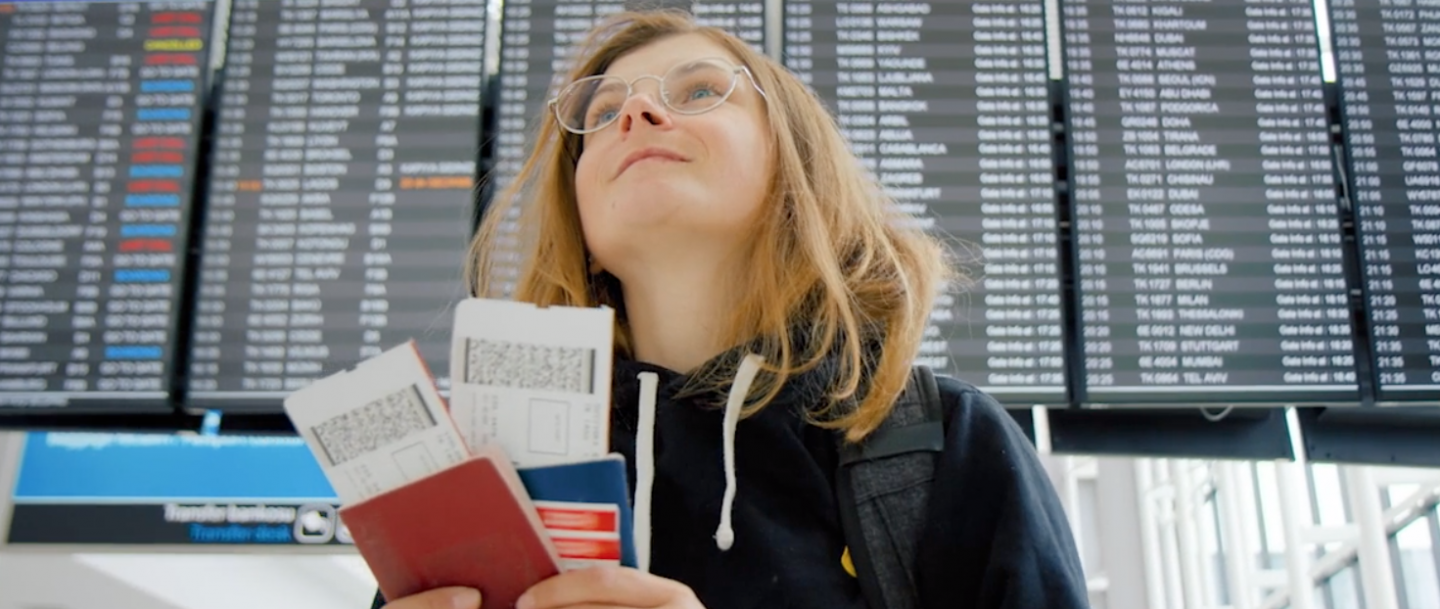
As with so many other industries, the pandemic impacted the aviation industry in ways that nobody could have anticipated. As we emerge on the other side, we all have the opportunity to take what we have learned from the entire experience and use that knowledge to decide how we can do things differently moving forward.
The pandemic truly highlighted the need for change in the aviation industry. It magnified smaller issues into larger ones, and revealed new challenges entirely. MHIRJ is active in pushing for improvement alongside our industry partners, so while attending the Regional Airline Association meeting in Washington, D.C. we had an insightful conversation with Addison Schonland, industry analyst and reporter for AirInsight.
From turning pain points into opportunities, and building technologies up to bring costs down, he shared his thoughts on the factors that can and will reinvent the industry as we know it:
BREAKING PAST BARRIERS
As we transition into a new era of opportunity, there are, of course, a number of structural barriers that continue to limit the pace of progress that we would ideally like to see. The biggest obstacle continues to be the pilot shortage. From pilots taking early retirement during the pandemic, to the financial and circumstantial challenges that new pilots face, the focus continues to lie on how we can remedy the situation.What remains clear is the fact that we need new pilots in the air to get planes off the ground, but regulations remain rigid—including the 1,500 hours required to become a fully licensed pilot:
FUTURE SOLUTIONS
Beyond changing the number of hours required for accreditation, or accelerating the means of acquiring them, financial factors are also at play. One viable solution that could help move the needle is funding for tuition—which currently costs approximately $200,000. As this number is not realistically affordable for most people, conversations need to be had with regulators and legislators on how we can create better, safer training with lower tuition.Will legislative change help? Yes. Will new technologies help? Yes. Will this take time, testing, and new safety measures? Yes. And this is why maintaining a united front continues to be our greatest strength in expediting new measures so that we can put real change on the horizon.
We’ll continue to cover the latest developments right here in WINGSPAN, and continue to lobby for collective change.
6 MIN.- Log in to post comments
PILOT SHORTAGE: DOING THINGS DIFFERENTLY

As with so many other industries, the pandemic impacted the aviation industry in ways that nobody could have anticipated. As we emerge on the other side, we all have the opportunity to take what we have learned from the entire experience and use that knowledge to decide how we can do things differently moving forward.
The pandemic truly highlighted the need for change in the aviation industry. It magnified smaller issues into larger ones, and revealed new challenges entirely. MHIRJ is active in pushing for improvement alongside our industry partners, so while attending the Regional Airline Association meeting in Washington, D.C. we had an insightful conversation with Addison Schonland, industry analyst and reporter for AirInsight.
From turning pain points into opportunities, and building technologies up to bring costs down, he shared his thoughts on the factors that can and will reinvent the industry as we know it:
BREAKING PAST BARRIERS
As we transition into a new era of opportunity, there are, of course, a number of structural barriers that continue to limit the pace of progress that we would ideally like to see. The biggest obstacle continues to be the pilot shortage. From pilots taking early retirement during the pandemic, to the financial and circumstantial challenges that new pilots face, the focus continues to lie on how we can remedy the situation.What remains clear is the fact that we need new pilots in the air to get planes off the ground, but regulations remain rigid—including the 1,500 hours required to become a fully licensed pilot:
FUTURE SOLUTIONS
Beyond changing the number of hours required for accreditation, or accelerating the means of acquiring them, financial factors are also at play. One viable solution that could help move the needle is funding for tuition—which currently costs approximately $200,000. As this number is not realistically affordable for most people, conversations need to be had with regulators and legislators on how we can create better, safer training with lower tuition.Will legislative change help? Yes. Will new technologies help? Yes. Will this take time, testing, and new safety measures? Yes. And this is why maintaining a united front continues to be our greatest strength in expediting new measures so that we can put real change on the horizon.
We’ll continue to cover the latest developments right here in WINGSPAN, and continue to lobby for collective change.
6 MIN.- Log in to post comments
-
PILOT SHORTAGE: THE FUTURE OF REGIONAL AVIATION
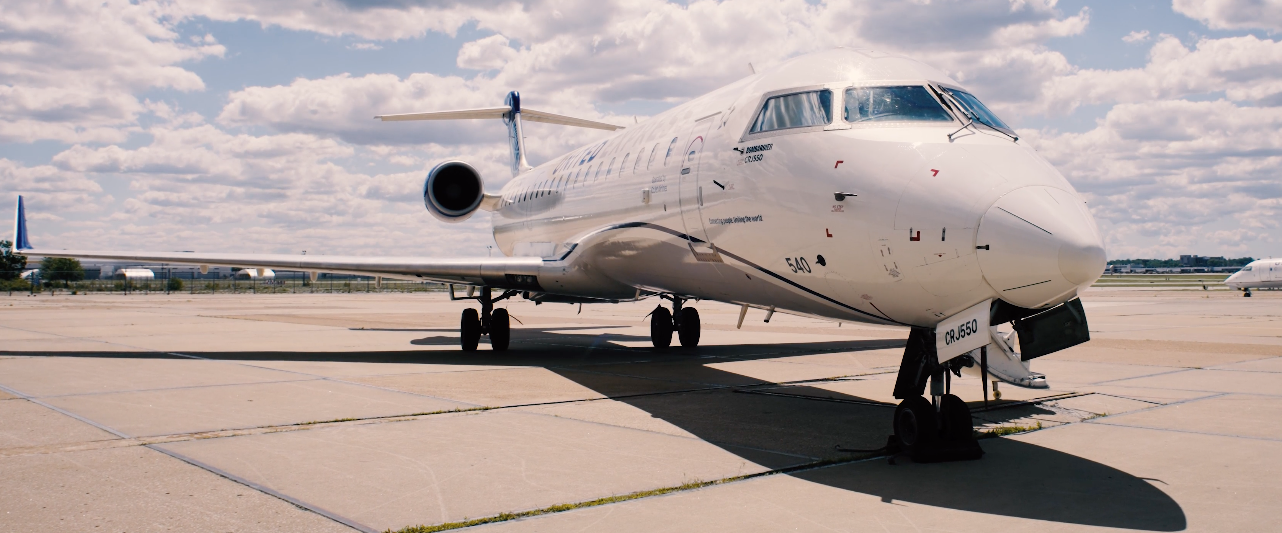
One of the biggest game changers recently in the regional aviation space is the introduction of the impressive CRJ550 aircraft. Since launching just a few years ago, it’s raised the bar in terms of comfort, space, and amenities for regional travel. But with the pilot shortage keeping many of these aircraft grounded, what’s next for the future of regional aviation?
The demand to get aircraft off the ground and in the air is ever-present. However, the obstacle of the pilot shortage continues to stand in the way. As MHIRJ remains united with industry partners in lobbying for change, we attended the Regional Airline Association meeting in Washington, D.C. While there, we chatted with Rick Leach, President and CEO of GoJet Airlines—a regional carrier for United Airlines. We discussed what’s on the horizon for regional aviation, and what it’s going to take to get there:
POWERING A PREMIUM EXPERIENCE
The CRJ550 aircraft is the only aircraft in its class with premium seating in two thirds of its spacious cabins, as well as first-class food and beverages—all of which has been overwhelmingly well received by the traveling public. For a regional product to rival the amenities of mainline aircraft is a big deal for the industry in that it’s helped change people’s perspective and created new appeal.“It has amenities for the first-class passenger that are unmatched. It has leg room, and it has the ability to store ample carry-on baggage so people can bring their luggage on, get it there, grab it and go. They're not waiting on the jet bridge. Customers even want to schedule their flights around the 550,” explains Leach.
POWER IN NUMBERS
In order to keep these impressive aircraft in flight, it takes banding together with other industry players to keep the momentum of change in the air. “Our voice is much stronger together,” says Leach, when talking about how leaders of regional carriers have been working alongside MHIRJ and other partners. “We have aircraft that are sitting on the ground because we can't staff them since we don't have the capacity or the pilots with the caliber needed to be in those cockpits.”However, as much as these pilots are needed, and needed fast, the industry cannot compromise on safety. Pilots still need to undergo rigorous training to ensure safety measures are maintained to the highest degree. What needs to happen from here on is for pilots to aspire to fly with regional airlines as much as their mainline counterparts. The fact that the CRJ500 is one of the highest-rated aircraft in the United fleet does hold weight, “and we're very proud of that for a regional aircraft to have that kind of a recognition,” Leach continues.
With even more growth on the horizon, they are not only trying to get existing aircraft back in the air. They are preparing to add even more to the fleet. This kind of organic growth presents amazing opportunity for airlines and pilots, but closing the gap in the shortage must happen simultaneously in order for it to succeed.
Stay tuned to WINGSPAN for even more developments in the pilot shortage and the changes that we are helping to leverage together.
4 MIN.- Log in to post comments
PILOT SHORTAGE: THE FUTURE OF REGIONAL AVIATION

One of the biggest game changers recently in the regional aviation space is the introduction of the impressive CRJ550 aircraft. Since launching just a few years ago, it’s raised the bar in terms of comfort, space, and amenities for regional travel. But with the pilot shortage keeping many of these aircraft grounded, what’s next for the future of regional aviation?
The demand to get aircraft off the ground and in the air is ever-present. However, the obstacle of the pilot shortage continues to stand in the way. As MHIRJ remains united with industry partners in lobbying for change, we attended the Regional Airline Association meeting in Washington, D.C. While there, we chatted with Rick Leach, President and CEO of GoJet Airlines—a regional carrier for United Airlines. We discussed what’s on the horizon for regional aviation, and what it’s going to take to get there:
POWERING A PREMIUM EXPERIENCE
The CRJ550 aircraft is the only aircraft in its class with premium seating in two thirds of its spacious cabins, as well as first-class food and beverages—all of which has been overwhelmingly well received by the traveling public. For a regional product to rival the amenities of mainline aircraft is a big deal for the industry in that it’s helped change people’s perspective and created new appeal.“It has amenities for the first-class passenger that are unmatched. It has leg room, and it has the ability to store ample carry-on baggage so people can bring their luggage on, get it there, grab it and go. They're not waiting on the jet bridge. Customers even want to schedule their flights around the 550,” explains Leach.
POWER IN NUMBERS
In order to keep these impressive aircraft in flight, it takes banding together with other industry players to keep the momentum of change in the air. “Our voice is much stronger together,” says Leach, when talking about how leaders of regional carriers have been working alongside MHIRJ and other partners. “We have aircraft that are sitting on the ground because we can't staff them since we don't have the capacity or the pilots with the caliber needed to be in those cockpits.”However, as much as these pilots are needed, and needed fast, the industry cannot compromise on safety. Pilots still need to undergo rigorous training to ensure safety measures are maintained to the highest degree. What needs to happen from here on is for pilots to aspire to fly with regional airlines as much as their mainline counterparts. The fact that the CRJ500 is one of the highest-rated aircraft in the United fleet does hold weight, “and we're very proud of that for a regional aircraft to have that kind of a recognition,” Leach continues.
With even more growth on the horizon, they are not only trying to get existing aircraft back in the air. They are preparing to add even more to the fleet. This kind of organic growth presents amazing opportunity for airlines and pilots, but closing the gap in the shortage must happen simultaneously in order for it to succeed.
Stay tuned to WINGSPAN for even more developments in the pilot shortage and the changes that we are helping to leverage together.
4 MIN.- Log in to post comments
-
PILOT SHORTAGE: RALLYING THE INDUSTRY
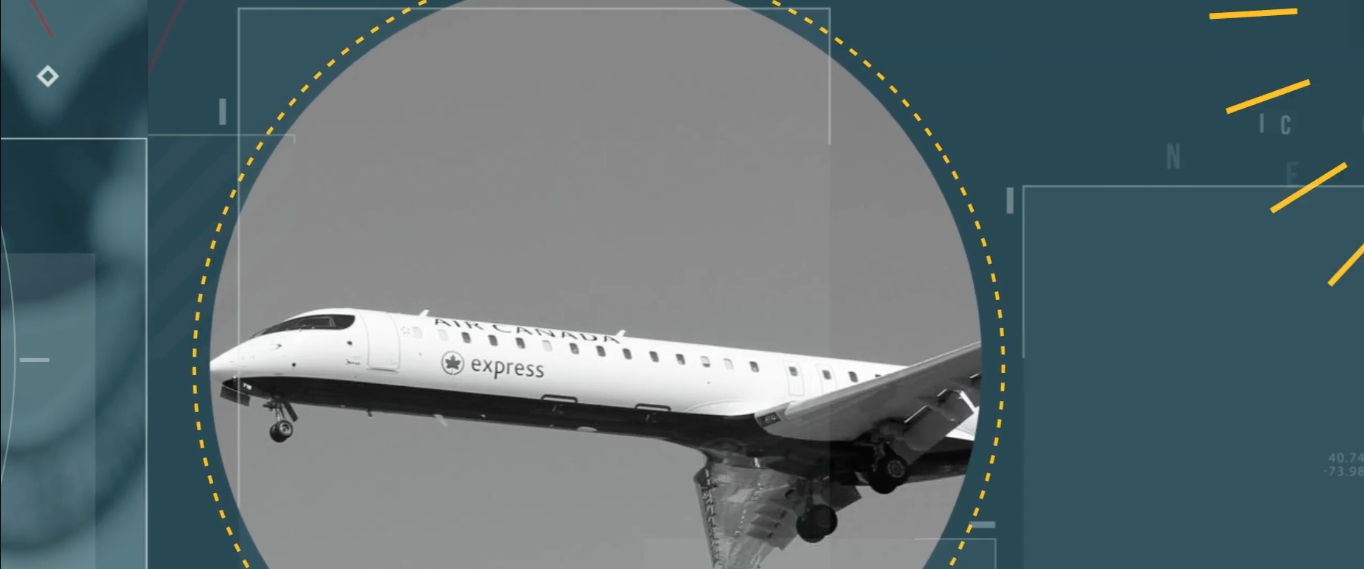
While the current pilot shortage is creating a major impact on regional airlines and the communities they serve, it’s also affecting its partners like airports, suppliers, and MROs like MHIRJ. A number of viable solutions have been brought to light, but it’s up to lawmakers and policymakers to put them into play.
When it comes to lobbying for critical change in the aviation industry, it’s imperative for all players to maintain a united front. We sat down to address the issue with Drew Jacoby Lemos, Vice-President Government Affairs with the Regional Airline Association (RAA), at their recent meeting in Washington, D.C.
What everyone can agree on is that the pilot shortage needs urgent solutions in order to keep communities connected and businesses thriving. However, change can only happen once lawmakers and policymakers are able to acknowledge the pain and frustration and begin addressing the problem.
“We can't solve it ourselves because so much of what we do depends on a cooperative and collaborative relationship with the FAA,” says Jacoby Lemos.
NEW TECHNOLOGY IS ON THE HORIZON
Something else to consider in relation to the pilot shortage is that in order to bring on the next generation of fuel-efficient aircrafts, “We need to have an industry that's robust and vibrant,” he said. These new technologies will play a critical role in accomplishing climate mitigation efforts, but the industry has to be strong enough to support the new technologies and their manufacturers.As the shortage persists, it will take a lot longer to bring them to market, thus highlighting the urgent need for more pilots. Maintaining a united front must continue in order to effectively lobby for rapid and effective changes moving forward.
STRONGER TOGETHER
The labor shortage needs to remain a top priority at every level. It’s imperative to keep service up and running, to keep communities connected, and to maintain economic stability and quality of life.
All industry stakeholders and the impacted communities need to get involved in order for our collective voices to be heard. In this spirit, MHIRJ recently joined the Rally For Air Service coalition, a group comprised of industry partners, airports, airlines, and concerned citizens uniting for action on the pilot shortage. Find out more at RallyforAirService.org.5 MIN.- Log in to post comments
PILOT SHORTAGE: RALLYING THE INDUSTRY

While the current pilot shortage is creating a major impact on regional airlines and the communities they serve, it’s also affecting its partners like airports, suppliers, and MROs like MHIRJ. A number of viable solutions have been brought to light, but it’s up to lawmakers and policymakers to put them into play.
When it comes to lobbying for critical change in the aviation industry, it’s imperative for all players to maintain a united front. We sat down to address the issue with Drew Jacoby Lemos, Vice-President Government Affairs with the Regional Airline Association (RAA), at their recent meeting in Washington, D.C.
What everyone can agree on is that the pilot shortage needs urgent solutions in order to keep communities connected and businesses thriving. However, change can only happen once lawmakers and policymakers are able to acknowledge the pain and frustration and begin addressing the problem.
“We can't solve it ourselves because so much of what we do depends on a cooperative and collaborative relationship with the FAA,” says Jacoby Lemos.
NEW TECHNOLOGY IS ON THE HORIZON
Something else to consider in relation to the pilot shortage is that in order to bring on the next generation of fuel-efficient aircrafts, “We need to have an industry that's robust and vibrant,” he said. These new technologies will play a critical role in accomplishing climate mitigation efforts, but the industry has to be strong enough to support the new technologies and their manufacturers.As the shortage persists, it will take a lot longer to bring them to market, thus highlighting the urgent need for more pilots. Maintaining a united front must continue in order to effectively lobby for rapid and effective changes moving forward.
STRONGER TOGETHER
The labor shortage needs to remain a top priority at every level. It’s imperative to keep service up and running, to keep communities connected, and to maintain economic stability and quality of life.
All industry stakeholders and the impacted communities need to get involved in order for our collective voices to be heard. In this spirit, MHIRJ recently joined the Rally For Air Service coalition, a group comprised of industry partners, airports, airlines, and concerned citizens uniting for action on the pilot shortage. Find out more at RallyforAirService.org.5 MIN.- Log in to post comments
-
PILOT SHORTAGE: CONSEQUENCES OF INACTION
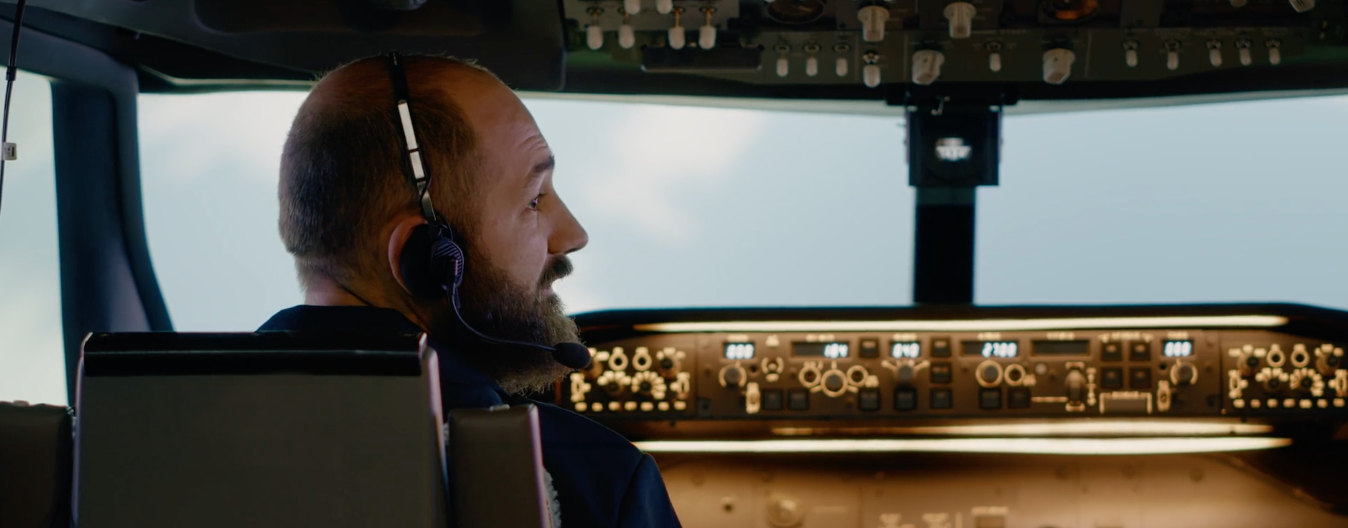
From reduced availability to rising fares, the effects of the pilot shortage are projected to remain for some time. For smaller communities, the impact on travel and the economy is being felt on a larger scale than bigger cities. We asked an industry expert for his insights on what he thinks this means for the future of regional aviation and economic stability.
Without enough pilots, there isn’t enough service. Without enough service, smaller communities become cut off from the larger network. How far will people have to drive to get to a flight? Will businesses rethink where they are located? Will enough pilots be trained before more airports close down? These questions continue to buzz around as the issue persists.
As part of our efforts to stay united with our industry partners in lobbying for change, MHIRJ attended the Regional Airline Association meeting in Washington, D.C. While there, we had an insightful conversation with industry analyst and data expert, Courtney Miller, about what he sees happening down the line if viable solutions are not put into play in a timely manner.
According to Miller, “Regional aviation is like a beating heart connecting communities.” With this in mind, he stressed the need for regulators to take the issue seriously and to implement changes as fast as possible:
THE ECONOMIC IMPACT
If the imbalance of supply and demand is not remedied with a clear path to enlisting more pilots, “The number of small communities losing service will only rise,” says Miller. “The backbone of America is built on smaller communities. There are a lot of small- to medium-sized communities that generate decent economic impact for their states.” This economic impact is being felt by cargo and freight carriers who are seeing a drop in demand. If not rectified, the impact of this downturn will be felt for years to come.
By continuing to have these conversations, we can collectively keep a spotlight on the issue and lobby for critical change with our legislators. Explore WINGSPAN for more conversations and valuable insights from our community.3 MIN.- Log in to post comments
PILOT SHORTAGE: CONSEQUENCES OF INACTION

From reduced availability to rising fares, the effects of the pilot shortage are projected to remain for some time. For smaller communities, the impact on travel and the economy is being felt on a larger scale than bigger cities. We asked an industry expert for his insights on what he thinks this means for the future of regional aviation and economic stability.
Without enough pilots, there isn’t enough service. Without enough service, smaller communities become cut off from the larger network. How far will people have to drive to get to a flight? Will businesses rethink where they are located? Will enough pilots be trained before more airports close down? These questions continue to buzz around as the issue persists.
As part of our efforts to stay united with our industry partners in lobbying for change, MHIRJ attended the Regional Airline Association meeting in Washington, D.C. While there, we had an insightful conversation with industry analyst and data expert, Courtney Miller, about what he sees happening down the line if viable solutions are not put into play in a timely manner.
According to Miller, “Regional aviation is like a beating heart connecting communities.” With this in mind, he stressed the need for regulators to take the issue seriously and to implement changes as fast as possible:
THE ECONOMIC IMPACT
If the imbalance of supply and demand is not remedied with a clear path to enlisting more pilots, “The number of small communities losing service will only rise,” says Miller. “The backbone of America is built on smaller communities. There are a lot of small- to medium-sized communities that generate decent economic impact for their states.” This economic impact is being felt by cargo and freight carriers who are seeing a drop in demand. If not rectified, the impact of this downturn will be felt for years to come.
By continuing to have these conversations, we can collectively keep a spotlight on the issue and lobby for critical change with our legislators. Explore WINGSPAN for more conversations and valuable insights from our community.3 MIN.- Log in to post comments
-
PILOT SHORTAGE: KEEPING THE NATION CONNECTED

As the pressing need for pilots continues to climb, the availability of regional flights continues to wane. What can be done to expedite training and close the gap without sacrificing safety?
There has always been an immense need for regional aviation in the United States. From keeping small communities connected, to the nation’s transportation system, to local travel, the post-pandemic demand remains high. In fact, over 70% of airports rely on regional service alone in order to operate.However, the current pilot shortage and other surrounding circumstances continue to take their toll on both flight availability and cost. MHIRJ recently attended the Regional Airline Association meeting in Washington, D.C. where this was one of the most talked-about topics. We had the pleasure of sitting down with Bryan Bedford, CEO and President of Republic Airways, to get his insights on the policy issues currently affecting regional airlines in particular.
While the pilot shortage actually began some years ago, it’s been further exacerbated by the fact that thousands of more senior aviators retired early, leaving us with a skilled void that needs to be filled, and hundreds of grounded aircraft across the country. Bedford expanded on three key effects:
When speaking about modern regional aviation, “The days of very robust schedules, lots of convenience, lots of competitive services, and competitive ticket prices—that’s probably not going to be realistic for the next several years,” he explained.
OPPORTUNITIES FOR THE GOVERNMENT AND THE INDUSTRY TO COLLABORATE
When it comes to training new pilots, what remains paramount is the need for safety and efficiency. However, current policies leave barriers that require new solutions—and it all starts with cost. “We have a challenge right now that it takes so long and it’s so expensive to become a pilot in the United States, so the burden is dissuading young men and women from considering the profession. And it’s creating an absolute iron wall barrier of entry for minority families to have their sons or daughters even dream of a transformational career in aviation. And that’s really unacceptable,” Bedford explained.
A suggested solution that could help even the playing field is funding for tuition, which currently costs approximately $200,000, and which few families can afford. Conversations need to be had with regulators and legislators on how we can create better, safer training with lower tuition. “We need to have serious thought on how we rethink training, and how we can do it in less time with less cost and we can produce superior, safer, more competent pilots in the process,” he adds.
REDUCING TIME WITHOUT COMPROMISING SAFETY
Aside from reducing cost, reducing time would also help alleviate the shortage faster. But the caveat with this is the associated risk of reducing safety. Would accelerating training in fact compromise safety? Not necessarily. Since the 1,500-hour rule became effective at the end of 2013, Bedford noticed significant increases in failure rates, with the reason being that they simply needed better training, curriculum, and structure. “We think there’s a better way to train pilots with more hands-on commercial training, as opposed to what the marketplace is offering today.”
This is where the conversations with the FAA come into play. Improvements in education and funding will make way for an easier path to a career as a pilot, and in turn reduce disruption in regional aviation.
7 MIN.- Log in to post comments
PILOT SHORTAGE: KEEPING THE NATION CONNECTED

As the pressing need for pilots continues to climb, the availability of regional flights continues to wane. What can be done to expedite training and close the gap without sacrificing safety?
There has always been an immense need for regional aviation in the United States. From keeping small communities connected, to the nation’s transportation system, to local travel, the post-pandemic demand remains high. In fact, over 70% of airports rely on regional service alone in order to operate.However, the current pilot shortage and other surrounding circumstances continue to take their toll on both flight availability and cost. MHIRJ recently attended the Regional Airline Association meeting in Washington, D.C. where this was one of the most talked-about topics. We had the pleasure of sitting down with Bryan Bedford, CEO and President of Republic Airways, to get his insights on the policy issues currently affecting regional airlines in particular.
While the pilot shortage actually began some years ago, it’s been further exacerbated by the fact that thousands of more senior aviators retired early, leaving us with a skilled void that needs to be filled, and hundreds of grounded aircraft across the country. Bedford expanded on three key effects:
When speaking about modern regional aviation, “The days of very robust schedules, lots of convenience, lots of competitive services, and competitive ticket prices—that’s probably not going to be realistic for the next several years,” he explained.
OPPORTUNITIES FOR THE GOVERNMENT AND THE INDUSTRY TO COLLABORATE
When it comes to training new pilots, what remains paramount is the need for safety and efficiency. However, current policies leave barriers that require new solutions—and it all starts with cost. “We have a challenge right now that it takes so long and it’s so expensive to become a pilot in the United States, so the burden is dissuading young men and women from considering the profession. And it’s creating an absolute iron wall barrier of entry for minority families to have their sons or daughters even dream of a transformational career in aviation. And that’s really unacceptable,” Bedford explained.
A suggested solution that could help even the playing field is funding for tuition, which currently costs approximately $200,000, and which few families can afford. Conversations need to be had with regulators and legislators on how we can create better, safer training with lower tuition. “We need to have serious thought on how we rethink training, and how we can do it in less time with less cost and we can produce superior, safer, more competent pilots in the process,” he adds.
REDUCING TIME WITHOUT COMPROMISING SAFETY
Aside from reducing cost, reducing time would also help alleviate the shortage faster. But the caveat with this is the associated risk of reducing safety. Would accelerating training in fact compromise safety? Not necessarily. Since the 1,500-hour rule became effective at the end of 2013, Bedford noticed significant increases in failure rates, with the reason being that they simply needed better training, curriculum, and structure. “We think there’s a better way to train pilots with more hands-on commercial training, as opposed to what the marketplace is offering today.”
This is where the conversations with the FAA come into play. Improvements in education and funding will make way for an easier path to a career as a pilot, and in turn reduce disruption in regional aviation.
7 MIN.- Log in to post comments
-
PILOT SHORTAGE: ELEVATING THE TRAINING LANDSCAPE

The need for change at every level of the aviation industry remains paramount as we continue to adjust and adapt to the new reality. When it comes to the acute need to train new pilots, time is of the essence. With so much new technology at our disposal, how can we leverage it to our advantage?
During a time when air travel was thriving, nobody could have predicted the unexpected arrival of the pandemic and the long-lasting impact it would have on the aviation industry. As with any unforeseen event, the only way to get through it is to rally together and pivot as needed. While it brought immense challenges to the table, it also presented the industry with the opportunity to make critical changes, including modifications to the regulations surrounding pilot training.
While attending the recent Regional Airline Association meeting in Washington, D.C. MHIRJ met with key industry players to have important conversations about current issues like the pilot shortage, and the solutions required to effectively resolve them. When it came down to discussing the need for changes in pilot training, there was no better person to speak to than Randy Babbitt—former commercial airline pilot for 25 years, former President and one of the founding members of the Air Line Pilots Association (ALPA), and former FAA Administrator from 2009–2011.
From the availability of new technologies to the need for superior safety practices, Babbitt weighed in on what he thinks needs to happen in order to elevate training and cater to today’s reality:
PUTTING TIME ON OUR SIDE
At the height of the pandemic, airlines had reduced their schedules to 20%, meaning around 80% of pilots weren’t flying at all. At the same time, this had a direct effect on training new pilots. “We've come through a difficult time. The pandemic did not help. You had limitations on people being in proximity. Obviously with masks and so forth, you couldn't even train together because we sit too close together in the airplane,” said Babbitt.
As a pilot for 25 years himself, and now serving as an advisor to the Regional Airline Association (RAA) on training and safety, Babbitt has experienced the impact first-hand and brings a valuable perspective to the table. Even though the industry has fully resumed training, obstacles remain, like the 1,500-hour flight time requirement for new commercial pilots, in comparison to 750 hours for military pilots. Babbitt explains:
“They put a requirement that you had to have more flight time. I think one of the areas we could make progress in is recognizing that not all flight hours are created equally. The legislation and aviation rule-making committees have looked at this and have said you're absolutely right. So, we should be able to substitute quality training for a block of flight hours.”
SAFETY FIRST
When it comes to hours, what matters is the quality of the hours and the exposure to real-life scenarios. Pilots need to know how to work in a multi-crew environment and how to react accordingly to a variety of challenging situations. From engine failure to hazardous wind shear, experience is everything when it comes to safety training. And that’s where technology comes in.
“Today’s modern six-axis level D simulator is precisely like flying the airplane. Technology has made huge advances in training and allowing us to better train pilots to the situations they’re going to operate in,” he said.
Since data supports the fact that new technologies in flight simulation do support better safety training, Babbitt hopes that regulators will acknowledge the value in augmented and virtual reality when it comes to required training hours. Modernizing training requirements can help get pilots accredited and in the air faster, helping to close the pilot shortage gap.6 MIN.- Log in to post comments
PILOT SHORTAGE: ELEVATING THE TRAINING LANDSCAPE

The need for change at every level of the aviation industry remains paramount as we continue to adjust and adapt to the new reality. When it comes to the acute need to train new pilots, time is of the essence. With so much new technology at our disposal, how can we leverage it to our advantage?
During a time when air travel was thriving, nobody could have predicted the unexpected arrival of the pandemic and the long-lasting impact it would have on the aviation industry. As with any unforeseen event, the only way to get through it is to rally together and pivot as needed. While it brought immense challenges to the table, it also presented the industry with the opportunity to make critical changes, including modifications to the regulations surrounding pilot training.
While attending the recent Regional Airline Association meeting in Washington, D.C. MHIRJ met with key industry players to have important conversations about current issues like the pilot shortage, and the solutions required to effectively resolve them. When it came down to discussing the need for changes in pilot training, there was no better person to speak to than Randy Babbitt—former commercial airline pilot for 25 years, former President and one of the founding members of the Air Line Pilots Association (ALPA), and former FAA Administrator from 2009–2011.
From the availability of new technologies to the need for superior safety practices, Babbitt weighed in on what he thinks needs to happen in order to elevate training and cater to today’s reality:
PUTTING TIME ON OUR SIDE
At the height of the pandemic, airlines had reduced their schedules to 20%, meaning around 80% of pilots weren’t flying at all. At the same time, this had a direct effect on training new pilots. “We've come through a difficult time. The pandemic did not help. You had limitations on people being in proximity. Obviously with masks and so forth, you couldn't even train together because we sit too close together in the airplane,” said Babbitt.
As a pilot for 25 years himself, and now serving as an advisor to the Regional Airline Association (RAA) on training and safety, Babbitt has experienced the impact first-hand and brings a valuable perspective to the table. Even though the industry has fully resumed training, obstacles remain, like the 1,500-hour flight time requirement for new commercial pilots, in comparison to 750 hours for military pilots. Babbitt explains:
“They put a requirement that you had to have more flight time. I think one of the areas we could make progress in is recognizing that not all flight hours are created equally. The legislation and aviation rule-making committees have looked at this and have said you're absolutely right. So, we should be able to substitute quality training for a block of flight hours.”
SAFETY FIRST
When it comes to hours, what matters is the quality of the hours and the exposure to real-life scenarios. Pilots need to know how to work in a multi-crew environment and how to react accordingly to a variety of challenging situations. From engine failure to hazardous wind shear, experience is everything when it comes to safety training. And that’s where technology comes in.
“Today’s modern six-axis level D simulator is precisely like flying the airplane. Technology has made huge advances in training and allowing us to better train pilots to the situations they’re going to operate in,” he said.
Since data supports the fact that new technologies in flight simulation do support better safety training, Babbitt hopes that regulators will acknowledge the value in augmented and virtual reality when it comes to required training hours. Modernizing training requirements can help get pilots accredited and in the air faster, helping to close the pilot shortage gap.6 MIN.- Log in to post comments
-
PILOT SHORTAGE: UNITED FRONT

As the pilot shortage continues, members of the aviation industry are rallying together to push for resolution. As the largest regional MRO, MHIRJ is working in solidarity with our industry partners to lobby for change, so we joined them at the recent Regional Airline Association meeting in Washington, D.C. While there, we sat down with Ross Mitchell, Vice-President, Strategy and Business Development at MHIRJ, to talk about the impact it’s having on a community level, and the solutions being implemented on a national level.
While issues related to the pilot shortage cannot possibly be remedied overnight, the urgency of the situation remains very real. From customers to Congress, everyone is talking about the challenges the regional aviation industry is facing in the U.S., and the short- and long-term solutions that need to be brought to the table.
By connecting with other members of the industry, we can all better understand these solutions, along with what needs to be done to make them happen. Together, we can strive to return to fully functional service without a labour shortage. Mitchell explains:
STRONGER TOGETHER
The key takeaway is that finding solutions to relieve the labour shortage needs to remain a top priority at every level. It’s imperative to keep service up and running, to keep communities connected, and to maintain economic stability and quality of life.
All industry stakeholders and the impacted communities need to be involved in order for our collective voices to be heard. In this spirit, MHIRJ recently joined The Rally For Air Service coalition, a group comprised of industry partners, airports, airlines, and concerned citizens uniting for action on the pilot shortage. Find out more at RallyforAirService.com.Let’s continue the conversation, keep pushing for change, and keep our sights set on a better future in aviation.
3 MIN.- Log in to post comments
PILOT SHORTAGE: UNITED FRONT

As the pilot shortage continues, members of the aviation industry are rallying together to push for resolution. As the largest regional MRO, MHIRJ is working in solidarity with our industry partners to lobby for change, so we joined them at the recent Regional Airline Association meeting in Washington, D.C. While there, we sat down with Ross Mitchell, Vice-President, Strategy and Business Development at MHIRJ, to talk about the impact it’s having on a community level, and the solutions being implemented on a national level.
While issues related to the pilot shortage cannot possibly be remedied overnight, the urgency of the situation remains very real. From customers to Congress, everyone is talking about the challenges the regional aviation industry is facing in the U.S., and the short- and long-term solutions that need to be brought to the table.
By connecting with other members of the industry, we can all better understand these solutions, along with what needs to be done to make them happen. Together, we can strive to return to fully functional service without a labour shortage. Mitchell explains:
STRONGER TOGETHER
The key takeaway is that finding solutions to relieve the labour shortage needs to remain a top priority at every level. It’s imperative to keep service up and running, to keep communities connected, and to maintain economic stability and quality of life.
All industry stakeholders and the impacted communities need to be involved in order for our collective voices to be heard. In this spirit, MHIRJ recently joined The Rally For Air Service coalition, a group comprised of industry partners, airports, airlines, and concerned citizens uniting for action on the pilot shortage. Find out more at RallyforAirService.com.Let’s continue the conversation, keep pushing for change, and keep our sights set on a better future in aviation.
3 MIN.- Log in to post comments
-
PILOT SHORTAGE: PUTTING PROGRESS IN MOTION
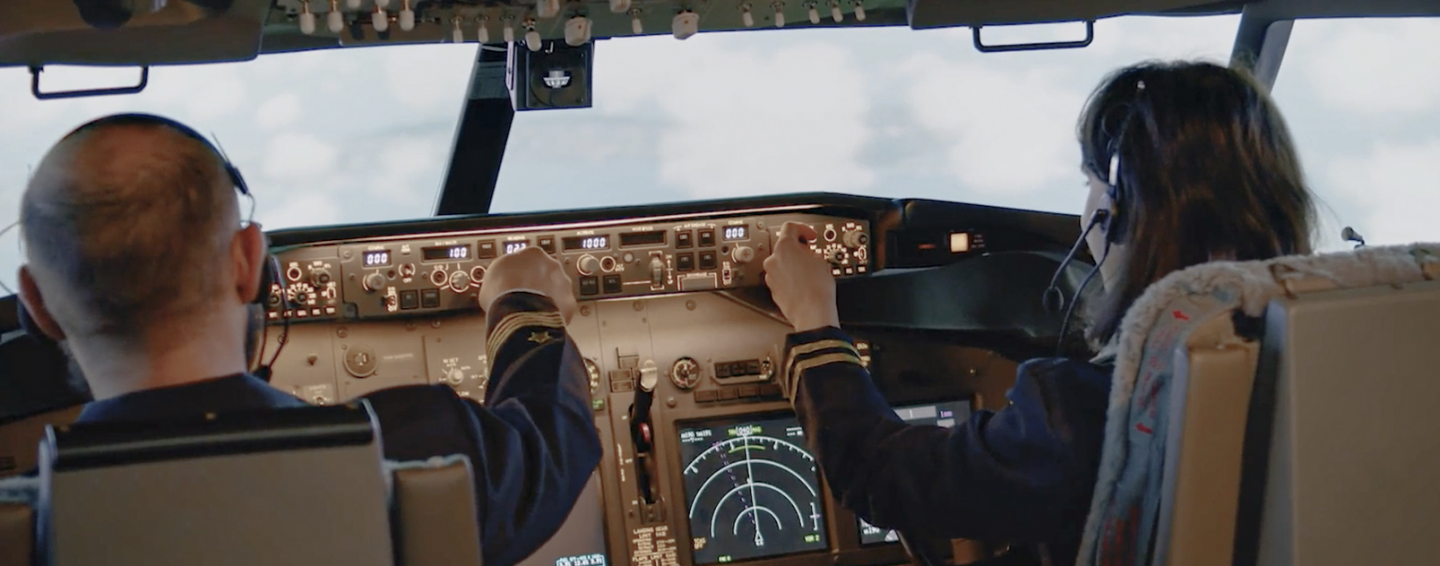
The effects of the pilot shortage continue to be felt across the nation. We sat down with Dion Flannery, CEO & President of PSA Airlines, and Chairman of the Regional Airline Association, to get his take on what’s being done, and the progress that needs to be made in order to help relieve the current situation.
As the public continues to be affected by the current circumstances in the aviation world, airlines, MROs, and governing bodies are all continuing to work together behind the scenes to find short- and long-term solutions to the pilot shortage that’s being felt nationwide. Having regional aircraft parked poses a problem for the passengers who depend on them, as well as everyone involved in the industry whose livelihoods are also directly affected.
In a recent interview, Dion Flannery discussed the realities everyone continues to face until concrete changes are implemented:
Three biggest barriers that still stand when it comes to recruiting new pilots are the cost of training, the minimum 1,500 flight-hours requirement, and the legal age of retirement. Much discussion has been had over how the government can quickly step in to help subsidize the high cost of flight school, recognize quality flight-hours training over quantity, as well as how they can adjust the required retirement age—all while ensuring the highest training and safety standards at every level:
MHIRJ remains at the forefront of lobbying for effective changes.
5 MIN.- Log in to post comments
PILOT SHORTAGE: PUTTING PROGRESS IN MOTION

The effects of the pilot shortage continue to be felt across the nation. We sat down with Dion Flannery, CEO & President of PSA Airlines, and Chairman of the Regional Airline Association, to get his take on what’s being done, and the progress that needs to be made in order to help relieve the current situation.
As the public continues to be affected by the current circumstances in the aviation world, airlines, MROs, and governing bodies are all continuing to work together behind the scenes to find short- and long-term solutions to the pilot shortage that’s being felt nationwide. Having regional aircraft parked poses a problem for the passengers who depend on them, as well as everyone involved in the industry whose livelihoods are also directly affected.
In a recent interview, Dion Flannery discussed the realities everyone continues to face until concrete changes are implemented:
Three biggest barriers that still stand when it comes to recruiting new pilots are the cost of training, the minimum 1,500 flight-hours requirement, and the legal age of retirement. Much discussion has been had over how the government can quickly step in to help subsidize the high cost of flight school, recognize quality flight-hours training over quantity, as well as how they can adjust the required retirement age—all while ensuring the highest training and safety standards at every level:
MHIRJ remains at the forefront of lobbying for effective changes.
5 MIN.- Log in to post comments
-
AIR NOSTRUM WINS THE DISPATCH RELIABILITY AWARD ONCE AGAIN
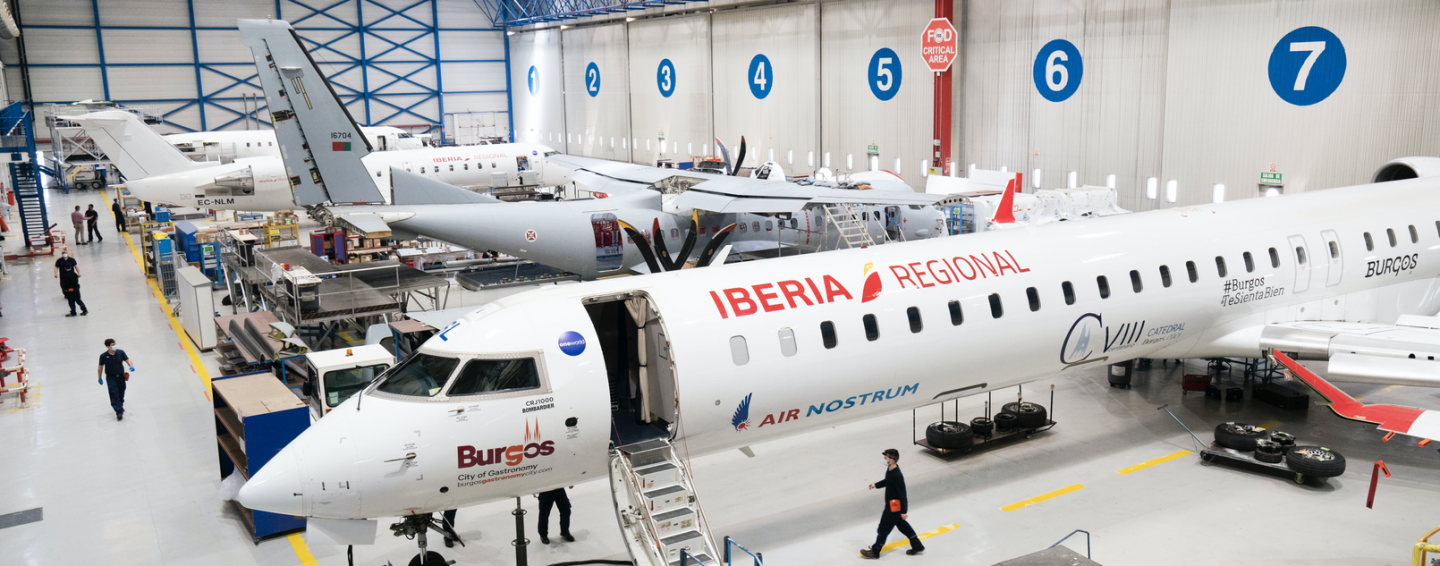
Spanish airline achieves highest dispatch reliability score amongst all CRJ operators in Europe, the Middle East, and Africa.
Air Nostrum, a world-class CRJ operator and leading European regional airline, has once again received the Dispatch Reliability Award—achieving the highest reliability score in 2021 amongst all CRJ operators in their region. With over 75,000 annual flights and 5.2 million passengers, Air Nostrum is Spain’s leading regional airline.
WORLDWIDE RECOGNITION FOR ACHIEVING EXCELLENCE
Established in 2009, the Dispatch Reliability Award recognizes worldwide operators of CRJ Series regional jets who have achieved industry-leading dispatch reliability rates of 99% or better. To date, Air Nostrum has won the award 10 times for the European region for both the CRJ100/200 and the CRJ700/900/1000 categories. This achievement makes Air Nostrum stand out as a regional champion that has continually led the way for the European regional aviation market by consistently exceeding expectations.
THE IMPORTANCE OF DISPATCH RELIABILITY
Dispatch reliability is a critical factor in aircraft operation. If the aircraft is not available, even for a short period, the consequences can be significant. Safely and efficiently transporting 99% or more of an airline’s passengers in a year is nothing short of incredible. When considering candidates for the Dispatch Reliability Award, MHIRJ focuses on product performance, airline support, and customer focus. These three pillars support the passenger experience and define how successful an airline is at transporting passengers from point A to point B.
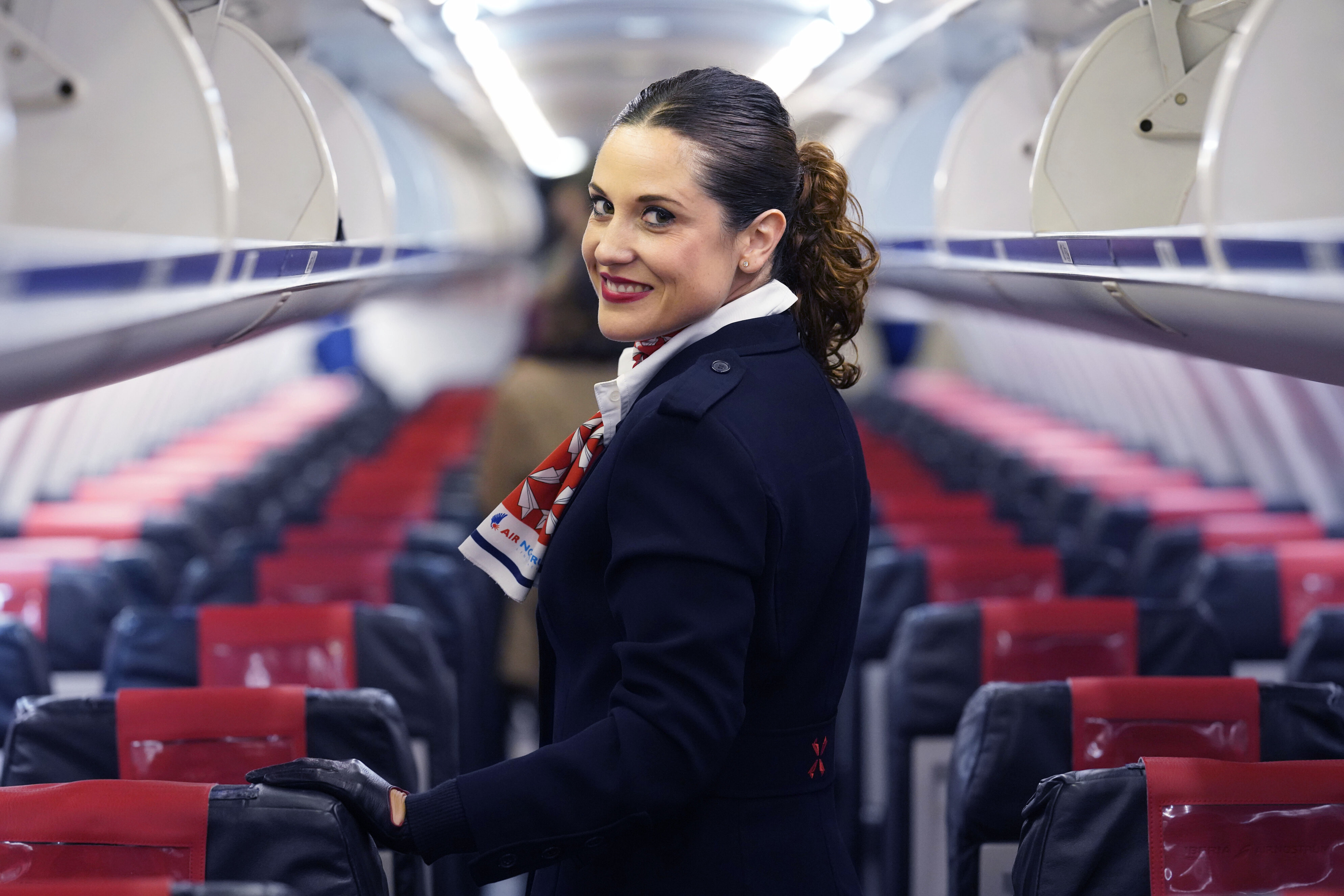
HOW AWARD WINNERS ARE IDENTIFIED
To identify award winners, the aircraft dispatch reliability of airlines is monitored through a data system called FRACAS (Failure Reporting, Analysis, and Corrective Action System). This reporting system is used by aviation companies to detect, assess, and correct failures in flight dispatch—streamlining flight processes through adaptive correction. MHIRJ has its own FRACAS database through which CRJ Series aircraft in service around the globe are monitored, allowing for accurate and consistent comparative data on all CRJ Series aircraft in service.
In addition to recognizing operators for their success, the award showcases airlines that achieve world-class performance reliability, and strives to promote a commitment to safety, consistency, and best practices.
AIR NOSTRUM GROWS WITH CRJ AIRCRAFT
The CRJ aircraft has been instrumental in Air Nostrum’s growth. Between 2016 and 2018, the airline tripled its CRJ1000 fleet, going from 10 to 30 high-performing aircraft that consistently achieve a Dispatch Reliability rate of 99.5% in service. Today, with a total of 37 CRJ aircraft, Air Nostrum has the largest CRJ fleet in the EMEA region.
IN THE COMPANY OF EXCELLENCE
Given to regional airlines around the globe, a few of the past recipients of the award include Air Wisconsin with 99.2% dispatch reliability, China Express Airlines with 99.8%, Jazz Aviation with 99.0%, and of course Air Nostrum with 99.55% dispatch reliability. This distinguished group of regional airlines, as well as many others not mentioned here, have consistently outdone themselves with the reliable service they provide to millions of passengers each year.
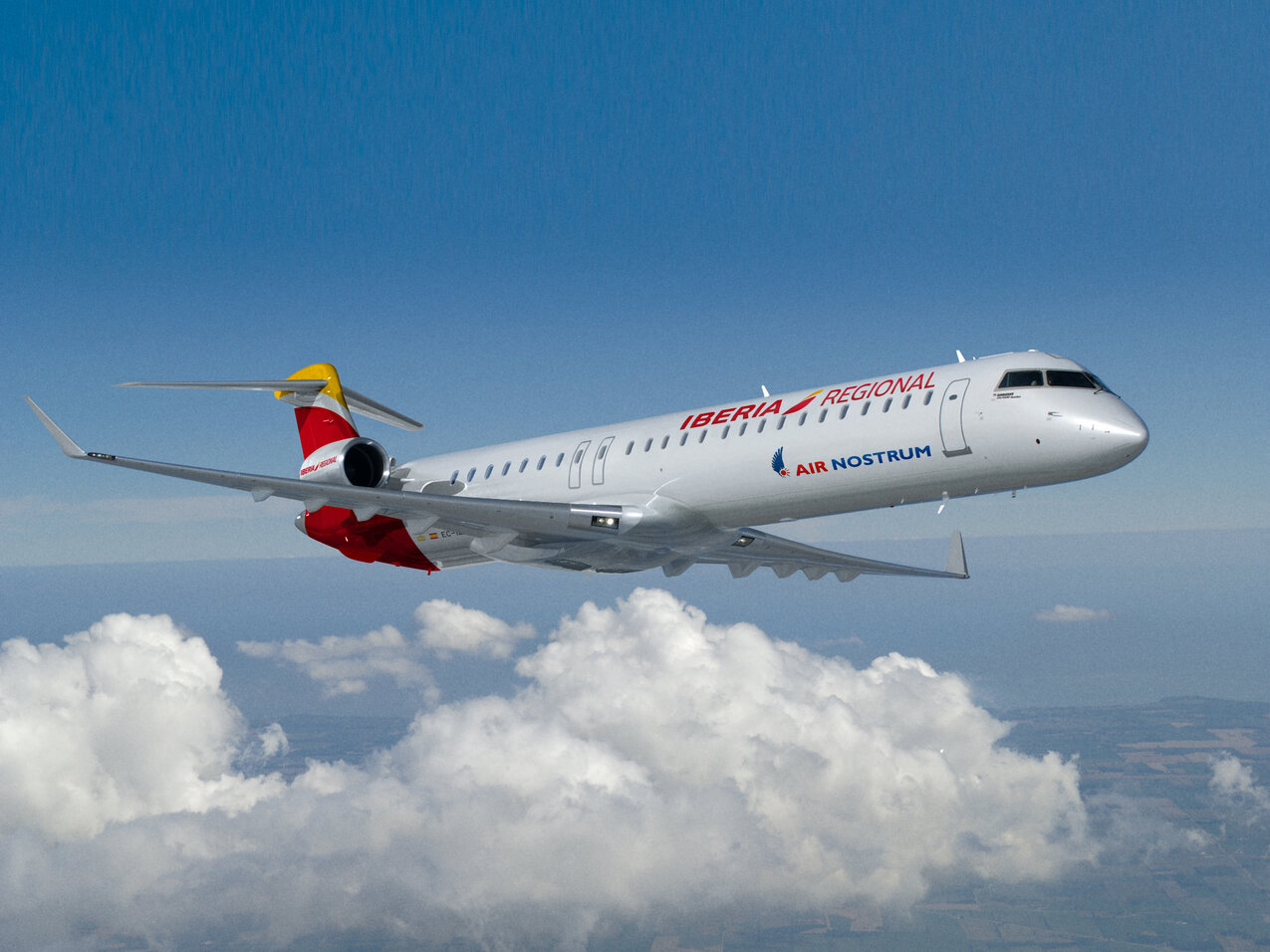

Carlos Bertomeu, Executive President at Air Nostrum, receives the Dispatch Reliability Award on behalf of the airline at the ERA 2022 in Portugal. Joining him is Bob Duffield (left), Head of Aftermarket Customer and Product Support at MHIRJ, along with Amel Belkhamsa (right), Head of Aftermarket Commercial Services & Spare Parts Operations at MHIRJ.
2 MIN.- Log in to post comments
AIR NOSTRUM WINS THE DISPATCH RELIABILITY AWARD ONCE AGAIN

Spanish airline achieves highest dispatch reliability score amongst all CRJ operators in Europe, the Middle East, and Africa.
Air Nostrum, a world-class CRJ operator and leading European regional airline, has once again received the Dispatch Reliability Award—achieving the highest reliability score in 2021 amongst all CRJ operators in their region. With over 75,000 annual flights and 5.2 million passengers, Air Nostrum is Spain’s leading regional airline.
WORLDWIDE RECOGNITION FOR ACHIEVING EXCELLENCE
Established in 2009, the Dispatch Reliability Award recognizes worldwide operators of CRJ Series regional jets who have achieved industry-leading dispatch reliability rates of 99% or better. To date, Air Nostrum has won the award 10 times for the European region for both the CRJ100/200 and the CRJ700/900/1000 categories. This achievement makes Air Nostrum stand out as a regional champion that has continually led the way for the European regional aviation market by consistently exceeding expectations.
THE IMPORTANCE OF DISPATCH RELIABILITY
Dispatch reliability is a critical factor in aircraft operation. If the aircraft is not available, even for a short period, the consequences can be significant. Safely and efficiently transporting 99% or more of an airline’s passengers in a year is nothing short of incredible. When considering candidates for the Dispatch Reliability Award, MHIRJ focuses on product performance, airline support, and customer focus. These three pillars support the passenger experience and define how successful an airline is at transporting passengers from point A to point B.

HOW AWARD WINNERS ARE IDENTIFIED
To identify award winners, the aircraft dispatch reliability of airlines is monitored through a data system called FRACAS (Failure Reporting, Analysis, and Corrective Action System). This reporting system is used by aviation companies to detect, assess, and correct failures in flight dispatch—streamlining flight processes through adaptive correction. MHIRJ has its own FRACAS database through which CRJ Series aircraft in service around the globe are monitored, allowing for accurate and consistent comparative data on all CRJ Series aircraft in service.
In addition to recognizing operators for their success, the award showcases airlines that achieve world-class performance reliability, and strives to promote a commitment to safety, consistency, and best practices.
AIR NOSTRUM GROWS WITH CRJ AIRCRAFT
The CRJ aircraft has been instrumental in Air Nostrum’s growth. Between 2016 and 2018, the airline tripled its CRJ1000 fleet, going from 10 to 30 high-performing aircraft that consistently achieve a Dispatch Reliability rate of 99.5% in service. Today, with a total of 37 CRJ aircraft, Air Nostrum has the largest CRJ fleet in the EMEA region.
IN THE COMPANY OF EXCELLENCE
Given to regional airlines around the globe, a few of the past recipients of the award include Air Wisconsin with 99.2% dispatch reliability, China Express Airlines with 99.8%, Jazz Aviation with 99.0%, and of course Air Nostrum with 99.55% dispatch reliability. This distinguished group of regional airlines, as well as many others not mentioned here, have consistently outdone themselves with the reliable service they provide to millions of passengers each year.


Carlos Bertomeu, Executive President at Air Nostrum, receives the Dispatch Reliability Award on behalf of the airline at the ERA 2022 in Portugal. Joining him is Bob Duffield (left), Head of Aftermarket Customer and Product Support at MHIRJ, along with Amel Belkhamsa (right), Head of Aftermarket Commercial Services & Spare Parts Operations at MHIRJ.
2 MIN.- Log in to post comments
-
THE RETURN OF MRO AMERICAS, AN INTERVIEW WITH LEE ANN SHAY - AVIATION WEEK NETWORK

This year's MRO Americas exhibition saw a great turnout with hundreds of exhibitors. It gave Stephanie Bento, Senior Brand Manager for MHIRJ, the opportunity to sit down with Lee Ann Shay, Executive Editor MRO and Business Aviation, Aviation Week Network, to discuss her insights on the trending topic of recruiting labour technicians to the industry.
Stephanie Bento: A hot topic in the industry right now is attracting talented maintenance technicians. And here to talk to us about that is Lee Ann Shay for Aviation Week. So, Lee Ann, from your perspective and your conversations in the MRO space, tell us, what are you seeing as a trend with this issue of recruiting labour technicians?
Lee Ann Shay: Labour shortage is being exasperated, especially as the airlines continue to recover. And there’s a lot of activity going around but it is having a direct impact for some MROs, but it’s also affecting the supply chain. It’s not just maintenance technicians, there’s a labour shortage around the world that’s affecting all aspects of the MRO industry. So, it is affecting turnaround time.
Stephanie Bento: We were really excited to be at this show post-COVID, meeting with our customers and our vendors. What do you take away from this year’s show?
Lee Ann Shay: It’s been a great MRO Americas. I mean they all are! But we are almost back to our pre-pandemic levels, but I think one of the over-arching themes was just that people are so happy to be back meeting in person and transacting business. We had over 800 exhibitors here. You know we had the commercial conference, MALMS, the Aerospace Maintenance Competition, record teams there. So just lots of really good enthusiasm. We’re very happy with it!4 MIN.- Log in to post comments
THE RETURN OF MRO AMERICAS, AN INTERVIEW WITH LEE ANN SHAY - AVIATION WEEK NETWORK

This year's MRO Americas exhibition saw a great turnout with hundreds of exhibitors. It gave Stephanie Bento, Senior Brand Manager for MHIRJ, the opportunity to sit down with Lee Ann Shay, Executive Editor MRO and Business Aviation, Aviation Week Network, to discuss her insights on the trending topic of recruiting labour technicians to the industry.
Stephanie Bento: A hot topic in the industry right now is attracting talented maintenance technicians. And here to talk to us about that is Lee Ann Shay for Aviation Week. So, Lee Ann, from your perspective and your conversations in the MRO space, tell us, what are you seeing as a trend with this issue of recruiting labour technicians?
Lee Ann Shay: Labour shortage is being exasperated, especially as the airlines continue to recover. And there’s a lot of activity going around but it is having a direct impact for some MROs, but it’s also affecting the supply chain. It’s not just maintenance technicians, there’s a labour shortage around the world that’s affecting all aspects of the MRO industry. So, it is affecting turnaround time.
Stephanie Bento: We were really excited to be at this show post-COVID, meeting with our customers and our vendors. What do you take away from this year’s show?
Lee Ann Shay: It’s been a great MRO Americas. I mean they all are! But we are almost back to our pre-pandemic levels, but I think one of the over-arching themes was just that people are so happy to be back meeting in person and transacting business. We had over 800 exhibitors here. You know we had the commercial conference, MALMS, the Aerospace Maintenance Competition, record teams there. So just lots of really good enthusiasm. We’re very happy with it!4 MIN.- Log in to post comments
-
PILOT SHORTAGE: RELIEVING THE PRESSURE

It’s no secret that the airline industry is currently facing a panoply of challenges. Recovering from the effects of the pandemic, rising fuel prices, infrastructure limitations, and labour shortages are all contributing to the impacts that are being felt nationwide and across the globe. While some of these challenges can be more easily rectified, one of the more complex and pressing issues affecting our industry is the current pilot shortage.
The pilot shortage has been an ever-growing issue for a number of years. The 2008 financial crisis saw many industries take a hit—including aviation. It hindered new pilots from taking on the costly burden of flight school, causing a slowdown in new pilots. Fast forward to current times and the issue only became more acute during the pandemic.
With early retirement offers from the airlines and a quick recovery in the air traffic market that was impossible to react to in a timely way, the demand for pilots quickly bounced back while the supply failed to keep up with the demand. In fact, 2020 and 2021 were among the lowest years for new issuances of ATP licenses in the last decade, causing a shortfall of approximately 6,000 pilots in the market.
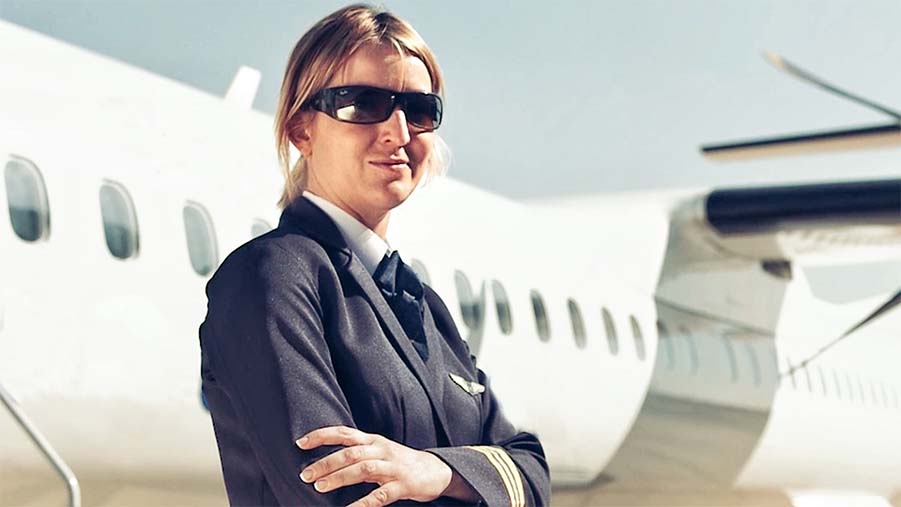
FEELING THE IMPACT
Both leisure and business travel have been greatly affected, but one of the most detrimental results of the shortage has been the cancellation of regional flights, impacting smaller communities around the United States. With major airlines hiring away pilots from regional airlines, routes have been cut from the network, grounding the operation of many regional aircraft impacting flying to the smallest communities in the country.
“During the early days of the pandemic, many of the large airlines were forced to ground their fleets. As a result, they offered early retirements to some of their senior pilots, and a number of their pilots took that, further exacerbating the problem we are facing now. Faced with the unfolding crisis of the pandemic, it was a reasonable plan. Now that flying is ramping back up again, many regional pilots have switched over to fly at the mainline airlines, subsequently causing an unforeseen shortage amongst regional carriers. If changes aren’t made, there certainly could be long-term impacts from this,” explained Ross Mitchell, Vice President, Strategy, Business Development, Marketing, Communications and Business Operations at MHIRJ.
Regional airlines provide a key service in connecting these small communities to the larger air service network, as well as providing them with essential goods and services. Since 66% of airports with scheduled passenger service receive their only service from regional airlines, the impact is being felt nationwide and even causing the closure of some smaller airports.
The knock-on effects of this are being felt throughout the regional industry. For perspective, the numbers speak for themselves. The Regional Airline Association conducted a study which suggests that regional airlines provide more than 1 million jobs, with $41 billion in wages and tax revenue for a total economic impact of $153 billion, with the shortage cutting into this greatly.
TIME IS OF THE ESSENCE
Exasperating the issue even more is the fact that 47% of Part 121 pilots must retire at the required age of 65 in the next 15 years, and another 13% in the next five years, while the supply of new pilots is not sufficient to replace these retiring pilots. And the recovery solution is not that simple. Currently, the FAA requires pilots to have at least 1,500 flight hours logged before they are eligible to work for an airline, once again limiting the speed at which pilots can enter the workforce. While absolutely respecting the need for ample experience and the highest level of safety training, reducing the number of hours would have a significant effect on expediting the recovery process.
WHAT ELSE CAN BE DONE?
Beyond lobbying to reduce the number of hours needed to safely become a licensed airline pilot, there are several other short-term and long-term solutions that can help alleviate the shortage. But this problem doesn’t just involve the airlines. It’s a systemic issue that’s affecting a number of industry players including airports, MROs, and OEMs. An interruption of service to passengers is a collective issue. MHIRJ has taken a stand in raising the alarms and acting as a serious partner in creating change within the industry.
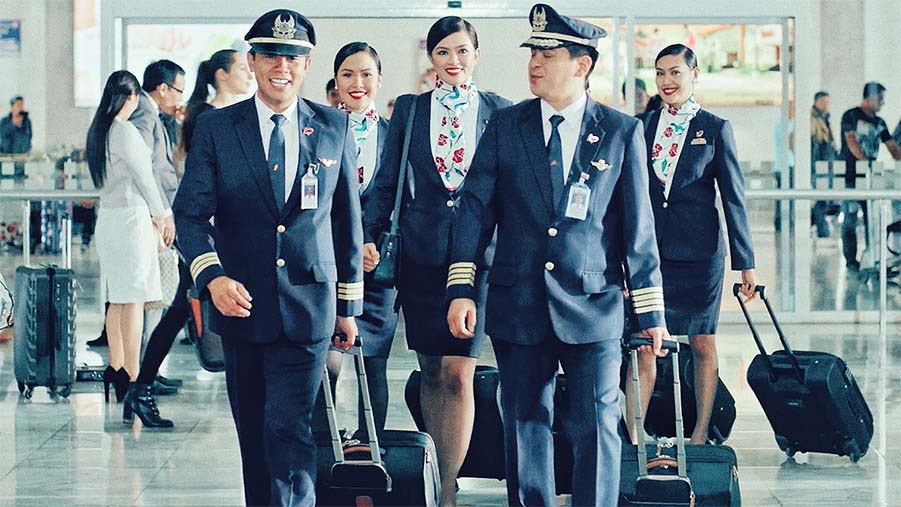
“All of the suppliers to the regional industry, the service providers, the maintenance and repair shops, the airports—everyone needs to be part of the solution to make sure this workforce issue is solved” says Mitchell on how greater impact can be made when forces gather to build momentum and have a stronger voice.
The heaviest lifting needs to be done on the legislative side to create effective changes, which is why MHIRJ is working in support of the Flight Education Access Act, led by Senator Tammy Baldwin. A review of current requirements for pilot qualification standards needs to be made in order to provide proficiency-based structured training pathways.
In the short term, extending the required retirement age for pilots from 65 to 67 will help fill the gap, as will expanding visa programs for foreign-trained pilots. In the longer term, efforts need to go into building appeal. Aviation needs to be promoted at all levels as an attractive and worthwhile profession for students to consider. Considering the cost of flight school, better funding for pilot training through access to student loan programs will work towards increasing enrolment.
While these solutions will take time, effort, patience, and unwavering dedication, we’ll continue working hard to advocate for change in order to help build a stronger, more reliable future in aviation for all.
Watch our video to learn more about the impact of pilot shortage.
MRO Americas 2022 interview with Ross Mitchell, Vice President, Corporate Shared Services at MHIRJ and Stephanie Bento, Senior Brand Manager.
6 MIN.- Log in to post comments
PILOT SHORTAGE: RELIEVING THE PRESSURE

It’s no secret that the airline industry is currently facing a panoply of challenges. Recovering from the effects of the pandemic, rising fuel prices, infrastructure limitations, and labour shortages are all contributing to the impacts that are being felt nationwide and across the globe. While some of these challenges can be more easily rectified, one of the more complex and pressing issues affecting our industry is the current pilot shortage.
The pilot shortage has been an ever-growing issue for a number of years. The 2008 financial crisis saw many industries take a hit—including aviation. It hindered new pilots from taking on the costly burden of flight school, causing a slowdown in new pilots. Fast forward to current times and the issue only became more acute during the pandemic.
With early retirement offers from the airlines and a quick recovery in the air traffic market that was impossible to react to in a timely way, the demand for pilots quickly bounced back while the supply failed to keep up with the demand. In fact, 2020 and 2021 were among the lowest years for new issuances of ATP licenses in the last decade, causing a shortfall of approximately 6,000 pilots in the market.

FEELING THE IMPACT
Both leisure and business travel have been greatly affected, but one of the most detrimental results of the shortage has been the cancellation of regional flights, impacting smaller communities around the United States. With major airlines hiring away pilots from regional airlines, routes have been cut from the network, grounding the operation of many regional aircraft impacting flying to the smallest communities in the country.
“During the early days of the pandemic, many of the large airlines were forced to ground their fleets. As a result, they offered early retirements to some of their senior pilots, and a number of their pilots took that, further exacerbating the problem we are facing now. Faced with the unfolding crisis of the pandemic, it was a reasonable plan. Now that flying is ramping back up again, many regional pilots have switched over to fly at the mainline airlines, subsequently causing an unforeseen shortage amongst regional carriers. If changes aren’t made, there certainly could be long-term impacts from this,” explained Ross Mitchell, Vice President, Strategy, Business Development, Marketing, Communications and Business Operations at MHIRJ.
Regional airlines provide a key service in connecting these small communities to the larger air service network, as well as providing them with essential goods and services. Since 66% of airports with scheduled passenger service receive their only service from regional airlines, the impact is being felt nationwide and even causing the closure of some smaller airports.
The knock-on effects of this are being felt throughout the regional industry. For perspective, the numbers speak for themselves. The Regional Airline Association conducted a study which suggests that regional airlines provide more than 1 million jobs, with $41 billion in wages and tax revenue for a total economic impact of $153 billion, with the shortage cutting into this greatly.
TIME IS OF THE ESSENCE
Exasperating the issue even more is the fact that 47% of Part 121 pilots must retire at the required age of 65 in the next 15 years, and another 13% in the next five years, while the supply of new pilots is not sufficient to replace these retiring pilots. And the recovery solution is not that simple. Currently, the FAA requires pilots to have at least 1,500 flight hours logged before they are eligible to work for an airline, once again limiting the speed at which pilots can enter the workforce. While absolutely respecting the need for ample experience and the highest level of safety training, reducing the number of hours would have a significant effect on expediting the recovery process.
WHAT ELSE CAN BE DONE?
Beyond lobbying to reduce the number of hours needed to safely become a licensed airline pilot, there are several other short-term and long-term solutions that can help alleviate the shortage. But this problem doesn’t just involve the airlines. It’s a systemic issue that’s affecting a number of industry players including airports, MROs, and OEMs. An interruption of service to passengers is a collective issue. MHIRJ has taken a stand in raising the alarms and acting as a serious partner in creating change within the industry.

“All of the suppliers to the regional industry, the service providers, the maintenance and repair shops, the airports—everyone needs to be part of the solution to make sure this workforce issue is solved” says Mitchell on how greater impact can be made when forces gather to build momentum and have a stronger voice.
The heaviest lifting needs to be done on the legislative side to create effective changes, which is why MHIRJ is working in support of the Flight Education Access Act, led by Senator Tammy Baldwin. A review of current requirements for pilot qualification standards needs to be made in order to provide proficiency-based structured training pathways.
In the short term, extending the required retirement age for pilots from 65 to 67 will help fill the gap, as will expanding visa programs for foreign-trained pilots. In the longer term, efforts need to go into building appeal. Aviation needs to be promoted at all levels as an attractive and worthwhile profession for students to consider. Considering the cost of flight school, better funding for pilot training through access to student loan programs will work towards increasing enrolment.
While these solutions will take time, effort, patience, and unwavering dedication, we’ll continue working hard to advocate for change in order to help build a stronger, more reliable future in aviation for all.
Watch our video to learn more about the impact of pilot shortage.
MRO Americas 2022 interview with Ross Mitchell, Vice President, Corporate Shared Services at MHIRJ and Stephanie Bento, Senior Brand Manager.
6 MIN.- Log in to post comments
-
FLYING GREEN INTO THE FUTURE
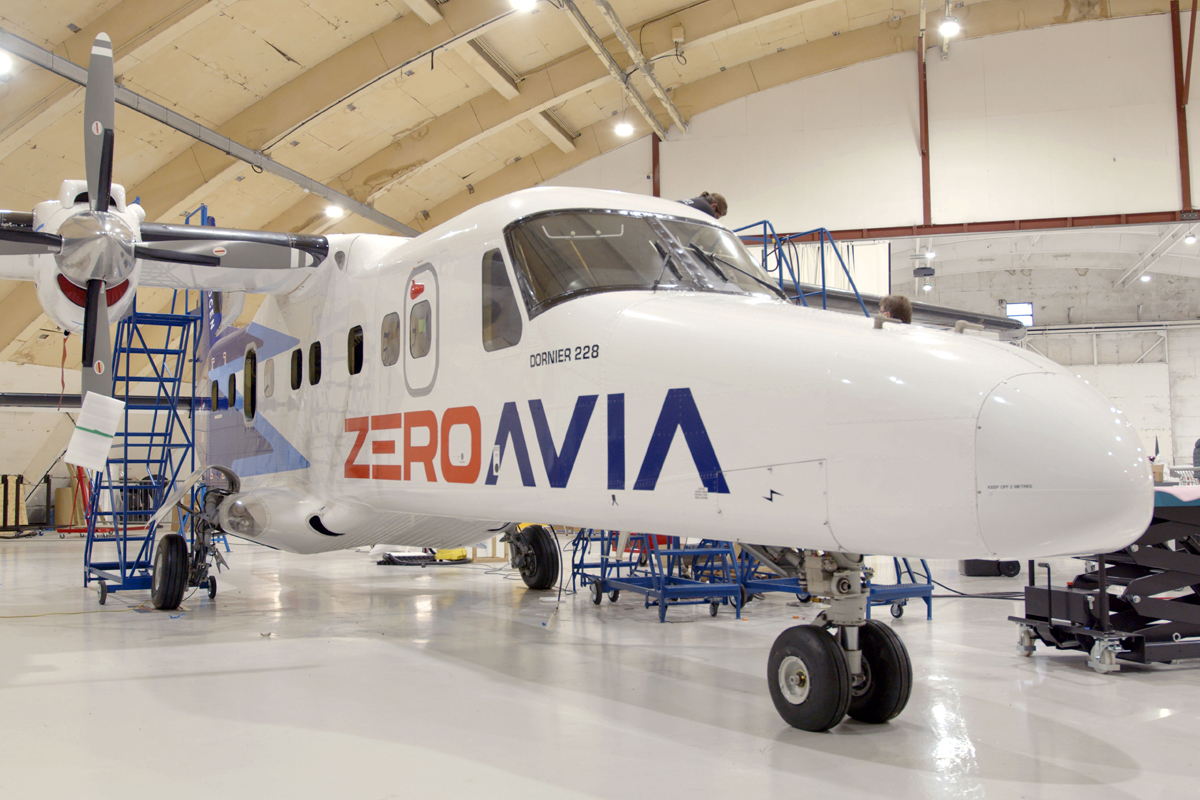
Emerging technologies are reshaping flight. Thanks to blockchain technology, augmented reality, robotics, artificial intelligence, amongst a few, aviation is growing in a new direction and is more exciting than ever. Like many industries critical to modern life, the aviation sector is focusing its efforts on leveraging technology to reduce carbon emissions to net-zero. The ultimate goal is to become “green” by 2050.
BRINGING NEW IDEAS IN SUSTAINABILITY TO THE MARKET
At MHIRJ, we are continuing that journey by helping innovators get their ideas to the market and be at the forefront of innovative and sustainable developments. Nowhere is this commitment more evident than in MHIRJ’s agreement with ZeroAvia, a leading innovator in hydrogen-electric propulsion for aviation. Together, MHIRJ and ZeroAvia will design and develop zero-emission propulsion technology for regional jet applications.
“ZeroAvia is positioning themselves to become a next-generation engine manufacturer. We hope they are going to have the biggest success in selling this engine to every aircraft OEM that is compatible with the engine,” said Elio Ruggi, Senior Vice-President, Head of Aircraft Development and Quality at MHIRJ.
“We have over 30 years of experience in the regional market, and we know what an aircraft requires, and the full product life cycle requirements. So, our support is going to be both technical and operational in nature.” MHIRJ will provide design and engineering services toward the certification of the engines, as well as advisory services to evaluate the feasibility of a green retrofit program for regional aircraft.
“We believe that in the future almost every aircraft in the world will be powered by hydrogen-electric engines, simply because it is the most viable and scalable method for eliminating carbon and to cut the other harmful emissions from the aviation sector,” said Val Miftakhov, CEO, ZeroAvia. “This collaboration with MHIRJ is a significant milestone for us and the aviation industry.”

“We’re going to help ZeroAvia design and certify a right size engine that’s not too big, too heavy, or too expensive, but optimized just right for flight, weight, and operating costs.”
Hydrogen is 3 times better than jet fuel in terms of energy per kilogram. The most efficient way to convert that energy into propulsion, hydrogen-electric engines represent the best approach for aircraft propulsion.
LEVERAGING MHIRJ’S UNIQUE EXPERTISE AND EXPERIENCE
Bringing this to market with MHIRJ is an ideal fit. At the MHIRJ Aerospace Engineering Center, project teams are being set up to leverage their vast set of skills and expertise. That includes bringing multiple aircraft to certification and valuable experience in CAA/FAA/ EASA jurisdictions. ZeroAvia is looking to partner with MHIRJ across the board to bring their innovation to market and to certify the airframes; not only for regional jet airframes, but for other applications in addition to CRJ series aircraft. As a result, this marks a crucial step in ZeroAvia’s progress and entry into a wider market. A recognized leader in zero-emission aircraft propulsion focused on hydrogen-electric power, ZeroAvia has completed more than 35 test flights of a Piper M-class six-seat aircraft using its hydrogen fuel cell powertrain. Currently, it is working to convert a larger 19-seat Dornier 228 aircraft. These powertrains require lower fuel and maintenance costs, and zero emissions that enable sustainable and scalable aviation.
A FASTER FLIGHT PATH TO THE FUTURE
By replacing conventional engines with hydrogen-electric powertrains, MHIRJ and ZeroAvia will enable scalable and sustainable aviation. Retrofitting existing airframes with hydrogen-electric engines provides the best opportunity to quickly get the technology to market. This approach simplifies regulatory issues while a clean sheet design would take more time for certification. In addition, hydrogen fuel cell propulsion suggests no theoretical/ physical limits to prevent us from progressing towards the largest aircraft types that exist today.
CREATING A VERTICALLY INTEGRATED FUEL ECOSYSTEM
Supply chain logistics are key to this innovative solution; therefore, a hydrogen fuel infrastructure will need to be put in place at strategic hubs. ZeroAvia has already worked with partners to develop blueprints on the right airport locations and has commitments from ten operators to fly their engines when ready. The predictability of scheduled aircraft makes it easier to create a fuel infrastructure as the routes are already defined. In the US, there are approximately 150 airports that drive 97% of passenger travel. Contrast that with consumer cars in the US where there are upwards of 400,000 fueling locations.
A MORE ENJOYABLE FLIGHT EXPERIENCE
Aside from the environmental benefits hydrogen-electric powertrains offer, this solution brings new benefits to the passenger flying experience. For example, aircraft noise levels will be much lower as well as vibrations, especially in regional aircraft. And there will be no smell of jet fuel.
What’s more, because hydrogen fuel cells enable an abundant source of electricity onboard aircraft, this technology will bring in more new electrified onboard amenities.
Creating a more sustainable future is a concept that is shared throughout MHIRJ “At MHIRJ we are working with propulsion innovators to ensure that we are at the forefront of such developments and can design solutions to move the world forward,” says Hiro Yamamoto, President and CEO of MHIRJ. “Regional aircraft are key to keeping smaller communities and regions connected and are also more able to exploit the new technologies on the horizon than larger aircraft and, therefore this is a logical place for this development to begin and we are proud to be a part of this innovative solution.”

See how the industry can best prepare to lead aviation into a new era of zero-emission flight and how hydrogen is poised to enter service in the coming years. Watch our video featuring Margaret Haswell, Business Development and Maintenance Engineering Manager at MHIRJ. Taken from the 2021 Hydrogen Aviation Summit, Margaret speaks on the challenges as well as opportunities this technology offers and MHIRJ’s role in unlocking zero-emission flight in collaboration with ZeroAvia.
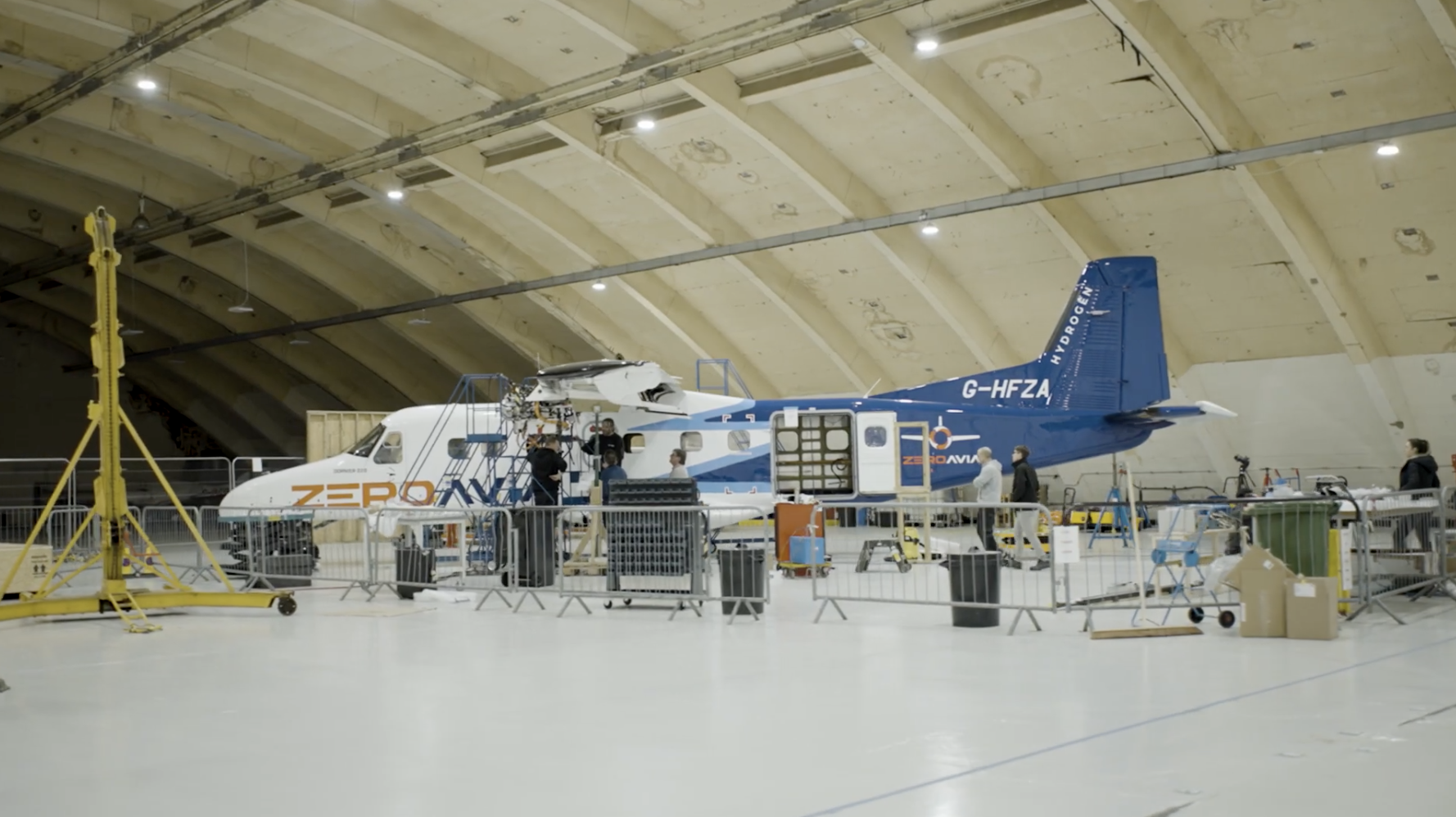 6 MIN.
6 MIN.- Log in to post comments
FLYING GREEN INTO THE FUTURE

Emerging technologies are reshaping flight. Thanks to blockchain technology, augmented reality, robotics, artificial intelligence, amongst a few, aviation is growing in a new direction and is more exciting than ever. Like many industries critical to modern life, the aviation sector is focusing its efforts on leveraging technology to reduce carbon emissions to net-zero. The ultimate goal is to become “green” by 2050.
BRINGING NEW IDEAS IN SUSTAINABILITY TO THE MARKET
At MHIRJ, we are continuing that journey by helping innovators get their ideas to the market and be at the forefront of innovative and sustainable developments. Nowhere is this commitment more evident than in MHIRJ’s agreement with ZeroAvia, a leading innovator in hydrogen-electric propulsion for aviation. Together, MHIRJ and ZeroAvia will design and develop zero-emission propulsion technology for regional jet applications.
“ZeroAvia is positioning themselves to become a next-generation engine manufacturer. We hope they are going to have the biggest success in selling this engine to every aircraft OEM that is compatible with the engine,” said Elio Ruggi, Senior Vice-President, Head of Aircraft Development and Quality at MHIRJ.
“We have over 30 years of experience in the regional market, and we know what an aircraft requires, and the full product life cycle requirements. So, our support is going to be both technical and operational in nature.” MHIRJ will provide design and engineering services toward the certification of the engines, as well as advisory services to evaluate the feasibility of a green retrofit program for regional aircraft.
“We believe that in the future almost every aircraft in the world will be powered by hydrogen-electric engines, simply because it is the most viable and scalable method for eliminating carbon and to cut the other harmful emissions from the aviation sector,” said Val Miftakhov, CEO, ZeroAvia. “This collaboration with MHIRJ is a significant milestone for us and the aviation industry.”

“We’re going to help ZeroAvia design and certify a right size engine that’s not too big, too heavy, or too expensive, but optimized just right for flight, weight, and operating costs.”
Hydrogen is 3 times better than jet fuel in terms of energy per kilogram. The most efficient way to convert that energy into propulsion, hydrogen-electric engines represent the best approach for aircraft propulsion.
LEVERAGING MHIRJ’S UNIQUE EXPERTISE AND EXPERIENCE
Bringing this to market with MHIRJ is an ideal fit. At the MHIRJ Aerospace Engineering Center, project teams are being set up to leverage their vast set of skills and expertise. That includes bringing multiple aircraft to certification and valuable experience in CAA/FAA/ EASA jurisdictions. ZeroAvia is looking to partner with MHIRJ across the board to bring their innovation to market and to certify the airframes; not only for regional jet airframes, but for other applications in addition to CRJ series aircraft. As a result, this marks a crucial step in ZeroAvia’s progress and entry into a wider market. A recognized leader in zero-emission aircraft propulsion focused on hydrogen-electric power, ZeroAvia has completed more than 35 test flights of a Piper M-class six-seat aircraft using its hydrogen fuel cell powertrain. Currently, it is working to convert a larger 19-seat Dornier 228 aircraft. These powertrains require lower fuel and maintenance costs, and zero emissions that enable sustainable and scalable aviation.
A FASTER FLIGHT PATH TO THE FUTURE
By replacing conventional engines with hydrogen-electric powertrains, MHIRJ and ZeroAvia will enable scalable and sustainable aviation. Retrofitting existing airframes with hydrogen-electric engines provides the best opportunity to quickly get the technology to market. This approach simplifies regulatory issues while a clean sheet design would take more time for certification. In addition, hydrogen fuel cell propulsion suggests no theoretical/ physical limits to prevent us from progressing towards the largest aircraft types that exist today.
CREATING A VERTICALLY INTEGRATED FUEL ECOSYSTEM
Supply chain logistics are key to this innovative solution; therefore, a hydrogen fuel infrastructure will need to be put in place at strategic hubs. ZeroAvia has already worked with partners to develop blueprints on the right airport locations and has commitments from ten operators to fly their engines when ready. The predictability of scheduled aircraft makes it easier to create a fuel infrastructure as the routes are already defined. In the US, there are approximately 150 airports that drive 97% of passenger travel. Contrast that with consumer cars in the US where there are upwards of 400,000 fueling locations.
A MORE ENJOYABLE FLIGHT EXPERIENCE
Aside from the environmental benefits hydrogen-electric powertrains offer, this solution brings new benefits to the passenger flying experience. For example, aircraft noise levels will be much lower as well as vibrations, especially in regional aircraft. And there will be no smell of jet fuel.
What’s more, because hydrogen fuel cells enable an abundant source of electricity onboard aircraft, this technology will bring in more new electrified onboard amenities.
Creating a more sustainable future is a concept that is shared throughout MHIRJ “At MHIRJ we are working with propulsion innovators to ensure that we are at the forefront of such developments and can design solutions to move the world forward,” says Hiro Yamamoto, President and CEO of MHIRJ. “Regional aircraft are key to keeping smaller communities and regions connected and are also more able to exploit the new technologies on the horizon than larger aircraft and, therefore this is a logical place for this development to begin and we are proud to be a part of this innovative solution.”

See how the industry can best prepare to lead aviation into a new era of zero-emission flight and how hydrogen is poised to enter service in the coming years. Watch our video featuring Margaret Haswell, Business Development and Maintenance Engineering Manager at MHIRJ. Taken from the 2021 Hydrogen Aviation Summit, Margaret speaks on the challenges as well as opportunities this technology offers and MHIRJ’s role in unlocking zero-emission flight in collaboration with ZeroAvia.
 6 MIN.
6 MIN.- Log in to post comments
-
ON A PATH TO GROWTH WITH GOJET
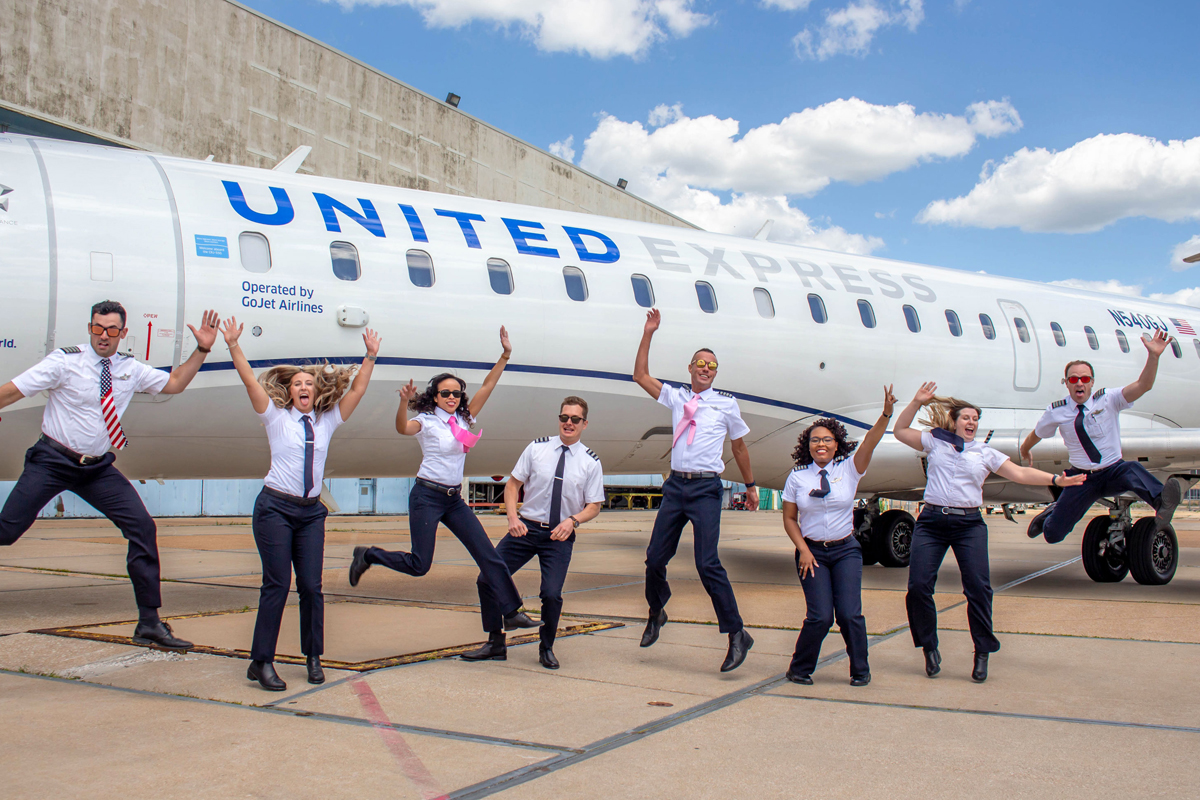
The world of aviation is undergoing unprecedented change. But with change comes opportunity. No regional airline illustrates the benefits of embracing change like GoJet Airlines, which has reinvented itself through its association with United Airlines and MHIRJ. Headquartered in St. Louis, Missouri, GoJet flies to over 50 destinations in the U.S. throughout the East Coast and Midwest, proudly flying for United Express. As the current sole operator of the revolutionary CRJ550 aircraft, GoJet is at the forefront of redefining the passenger experience by offering the world’s only two-cabin 50-seat regional aircraft, specifically designed for business and leisure travelers who want true first-class seating. This new aircraft version elevates the travel experience for passengers, providing GoJet with an exciting path forward to growth in partnership with United Airlines.
Contributed by: Pierre Gagnon, Director, Business Development, Aftermarket Commercial Services
Why customers love flying the CRJ550:
- More legroom per seat than any other 50-seat aircraft.
- Passengers can bring one roller bag onboard.
- United Wi-Fi available in-flight.
“Our customers are telling us they love flying the CRJ550 and we’re excited to continue growing our fleet and our long-standing relationship with GoJet.” Sarah Murphy, United’s Senior Vice-President of United Express.
Established in late 2004 by Trans States Holdings, GoJet initially flew United Express branded flights out of United Airlines’s Chicago O’Hare hub to replace departing United Express carrier Atlantic Coast Airlines. In 2005, GoJet took delivery of their first CRJ700 aircraft and began scheduled passenger services. When the CRJ550 concept was developed in 2018, United Airlines quickly recognized the potential of this aircraft for their regional network and gave GoJet the go-ahead for 54 aircraft. GoJet will acquire an additional 20 aircraft bringing the total fleet to 74 CRJ550 aircraft flying for United Airlines by fall of 2022.
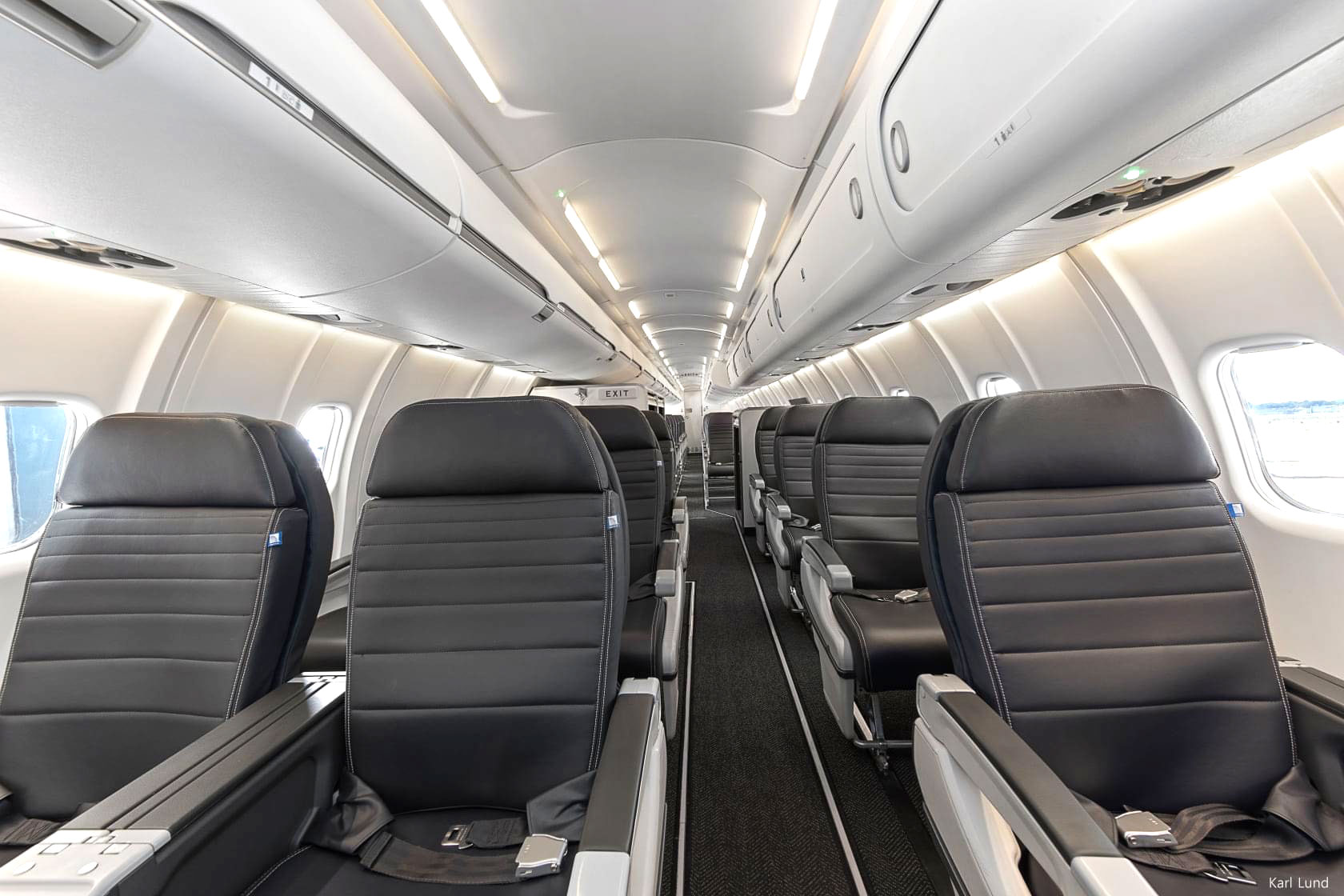
A WHOLE NEW WAY TO GO
A first-of-its-kind, the CRJ550 is the only premium 50-seater in the regional market with first-class seating. The CRJ550 offers passengers many enhancements not available on larger regional jets flying in the marketplace today. For example, it has more overall legroom per seat than any other 50-seat aircraft flown by a U.S. airline as well as more overall legroom for premium customers than any regional aircraft in the market today, space for every customer to bring a roller bag on board, a self-serve refreshment center, and the ability to stay connected while in flight with United Wi-Fi.
This new direction in fleet strategy has been incredibly positive for GoJet and United Airlines. “Feedback from customers has been fantastic,” said Rick Leach, President and Chief Executive Officer of GoJet Airlines. “United’s decision to add more of these aircraft so quickly after the initial product launch is indicative of their long-term commitment to both the CRJ550 platform and to GoJet. We look forward to growing this exciting program with United.”
ACCOLADES FROM PASSENGERS AND PARTNERS
As a testament to its growth potential for GoJet, the CRJ550 has one of the highest passenger acceptance ratings in United Airlines’ entire fleet. “Our customers are telling us they love flying the CRJ550 and we’re excited to continue growing our fleet and our long-standing relationship with GoJet,” said Sarah Murphy, United’s Senior Vice-President of United Express. “We congratulate GoJet on the success of the CRJ550 program and we look forward to offering travelers more opportunities to experience this aircraft.”
A WIN/WIN/WIN SITUATION
With its unique market position as the only operator of CRJ550 aircraft, GoJet is coming out of the downturn stronger and equipped to grow market share. It is truly a win/win/win situation for GoJet, United Airlines and MHIRJ. Together, GoJet, United and MHIRJ are connecting passengers to their destinations via a new class of regional travel that customers value, putting all three partners on a path to growth.
4 MIN.- Log in to post comments
ON A PATH TO GROWTH WITH GOJET

The world of aviation is undergoing unprecedented change. But with change comes opportunity. No regional airline illustrates the benefits of embracing change like GoJet Airlines, which has reinvented itself through its association with United Airlines and MHIRJ. Headquartered in St. Louis, Missouri, GoJet flies to over 50 destinations in the U.S. throughout the East Coast and Midwest, proudly flying for United Express. As the current sole operator of the revolutionary CRJ550 aircraft, GoJet is at the forefront of redefining the passenger experience by offering the world’s only two-cabin 50-seat regional aircraft, specifically designed for business and leisure travelers who want true first-class seating. This new aircraft version elevates the travel experience for passengers, providing GoJet with an exciting path forward to growth in partnership with United Airlines.
Contributed by: Pierre Gagnon, Director, Business Development, Aftermarket Commercial Services
Why customers love flying the CRJ550:
- More legroom per seat than any other 50-seat aircraft.
- Passengers can bring one roller bag onboard.
- United Wi-Fi available in-flight.
“Our customers are telling us they love flying the CRJ550 and we’re excited to continue growing our fleet and our long-standing relationship with GoJet.” Sarah Murphy, United’s Senior Vice-President of United Express.
Established in late 2004 by Trans States Holdings, GoJet initially flew United Express branded flights out of United Airlines’s Chicago O’Hare hub to replace departing United Express carrier Atlantic Coast Airlines. In 2005, GoJet took delivery of their first CRJ700 aircraft and began scheduled passenger services. When the CRJ550 concept was developed in 2018, United Airlines quickly recognized the potential of this aircraft for their regional network and gave GoJet the go-ahead for 54 aircraft. GoJet will acquire an additional 20 aircraft bringing the total fleet to 74 CRJ550 aircraft flying for United Airlines by fall of 2022.

A WHOLE NEW WAY TO GO
A first-of-its-kind, the CRJ550 is the only premium 50-seater in the regional market with first-class seating. The CRJ550 offers passengers many enhancements not available on larger regional jets flying in the marketplace today. For example, it has more overall legroom per seat than any other 50-seat aircraft flown by a U.S. airline as well as more overall legroom for premium customers than any regional aircraft in the market today, space for every customer to bring a roller bag on board, a self-serve refreshment center, and the ability to stay connected while in flight with United Wi-Fi.
This new direction in fleet strategy has been incredibly positive for GoJet and United Airlines. “Feedback from customers has been fantastic,” said Rick Leach, President and Chief Executive Officer of GoJet Airlines. “United’s decision to add more of these aircraft so quickly after the initial product launch is indicative of their long-term commitment to both the CRJ550 platform and to GoJet. We look forward to growing this exciting program with United.”
ACCOLADES FROM PASSENGERS AND PARTNERS
As a testament to its growth potential for GoJet, the CRJ550 has one of the highest passenger acceptance ratings in United Airlines’ entire fleet. “Our customers are telling us they love flying the CRJ550 and we’re excited to continue growing our fleet and our long-standing relationship with GoJet,” said Sarah Murphy, United’s Senior Vice-President of United Express. “We congratulate GoJet on the success of the CRJ550 program and we look forward to offering travelers more opportunities to experience this aircraft.”
A WIN/WIN/WIN SITUATION
With its unique market position as the only operator of CRJ550 aircraft, GoJet is coming out of the downturn stronger and equipped to grow market share. It is truly a win/win/win situation for GoJet, United Airlines and MHIRJ. Together, GoJet, United and MHIRJ are connecting passengers to their destinations via a new class of regional travel that customers value, putting all three partners on a path to growth.
4 MIN.- Log in to post comments
-
THE COMPETITIVE ADVANTAGE OF REGIONAL AIRCRAFT

2017 was a different time. Barely five years past, the intense competition for the business passenger seems a story for a bygone era.
In the world’s largest market, the fight amongst the U.S. network airlines was for the high yield passenger. Increasing connectivity brought new corporate accounts, higher fares, and increased profitability. There was no better place to find these advantages than in the regional networks.
REGIONAL CONNECTIVITY SURVIVES AND THRIVES
In April of 2017, United Airlines made a decisive move to increase its competitive network by adding 65 50-seat CRJ200 aircraft from Air Wisconsin to its United Express fleet. Contrary to the long-expected sunset of the 50-seat jet, the ability for the aircraft to increase connectivity through United’s Chicago and Washington D.C. hubs proved critical in the fight for the business passenger. The fight for the business passenger, network connectivity, and higher fares reached a fever pitch.Of course, March 2020 changed everything. The idea of optimizing revenue on full aircraft gave way to empty seats and a scramble to save costs. Even as the first signs of the recovery started to appear in Summer 2020, the business traveler was nowhere to be found. Leisure travel ruled the skies, and the airline networks adjusted quickly to accommodate. Today, regional connectivity continues, even without the highly sought-for business passenger who so demanded the service.
It is through the lens of connectivity, and the competitive advantages which were once so highly sought, that we assess the impact of the regional aircraft through the drastic changes of the pandemic.
Beyond the fact that regional aviation was able to maintain connectivity during the most difficult times, and even though we are in an early recovery phase today, we now look to the future, and how regional aviation is expected to, once again, become the competitive differentiator in the United States.
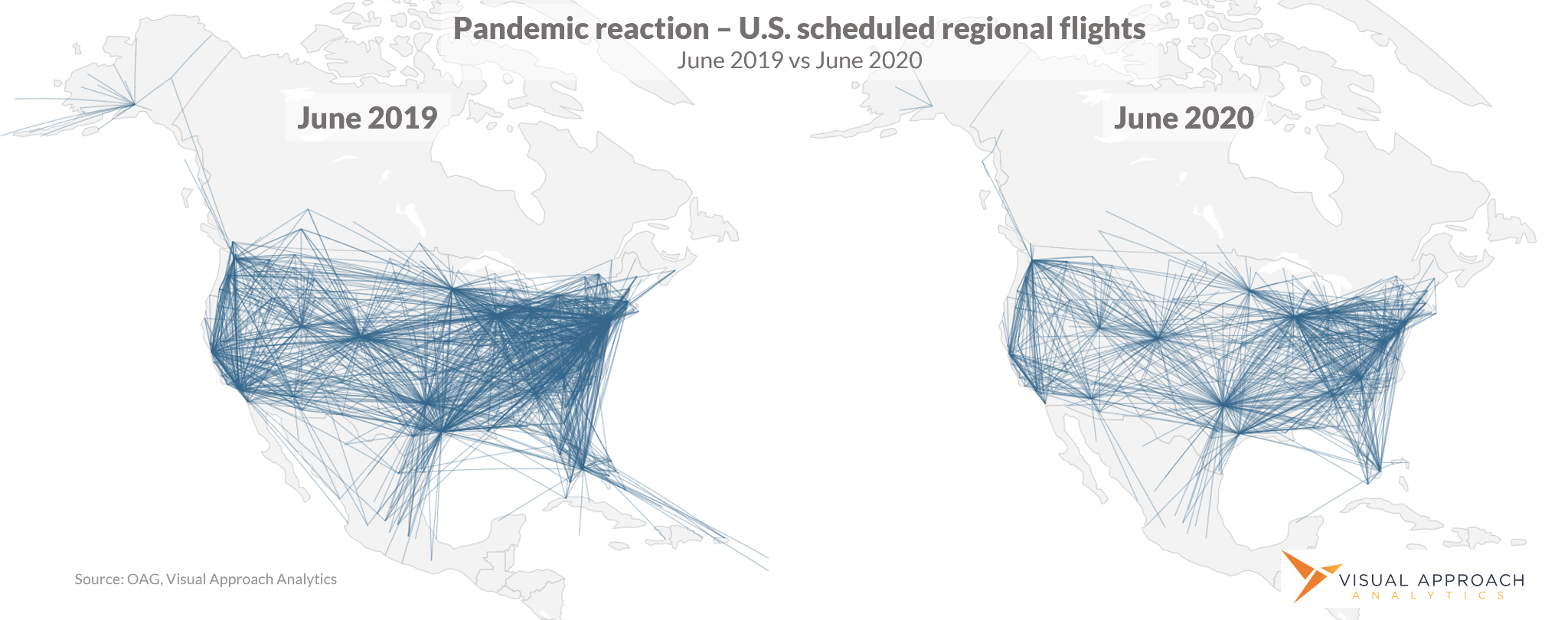
A NEW NICHE FOR REGIONAL FLEETS
For airlines around the world, the objective of Spring 2020 was brutally simple - survive. As air travel plummeted 97% in April, entire fleets of aircraft were parked in a bid to save precious cash. As larger mainline aircraft which remained active found themselves flying with mostly-empty seats, the protective role of the country’s regional aviation network became apparent
Despite the unprecedented drop in travel demand, the air transportation system in the United States maintained its connective integrity, driven largely by a regional fleet. Yet, as critical as this essential service of maintaining connectivity amid a crisis may be, it is not the core role of regional aviation. Regional aviation exists to compound airline presence, to be a competitive instrument, and most importantly, to be profitable.
Even as the demographic of the U.S. domestic traveler has become increasingly leisure-oriented, so too have the networks shifted to larger aircraft in order to connect many vacationers with the few vacationheavy destinations. Tourist destinations such as Florida, Colorado, and Las Vegas saw robust recoveries, driven by larger jets full of passengers paying low fares. Meanwhile, the high-yield business traveler remains elusive.
For a regional industry so dependent upon the value brought from connectivity rather than simply discounted fares, the slow return of the business traveler might seem concerning. However, no evidence suggests that ultra-low business travel is here to stay.
Leisure demand has recovered, fulfilling much of the demand present prior to the pandemic. However, the long-awaited real recovery is expected to be business and international demand-driven, where the greatest opportunity for regrowth remains.
Analysis of market concentration strongly suggests that the regional aircraft in the United States will once again signal a strong competitive advantage, just as it did in 2017.
This anticipated growth in business and international demand is highly dependent upon network connectivity - precisely the competitive advantage brought by a robust regional network.

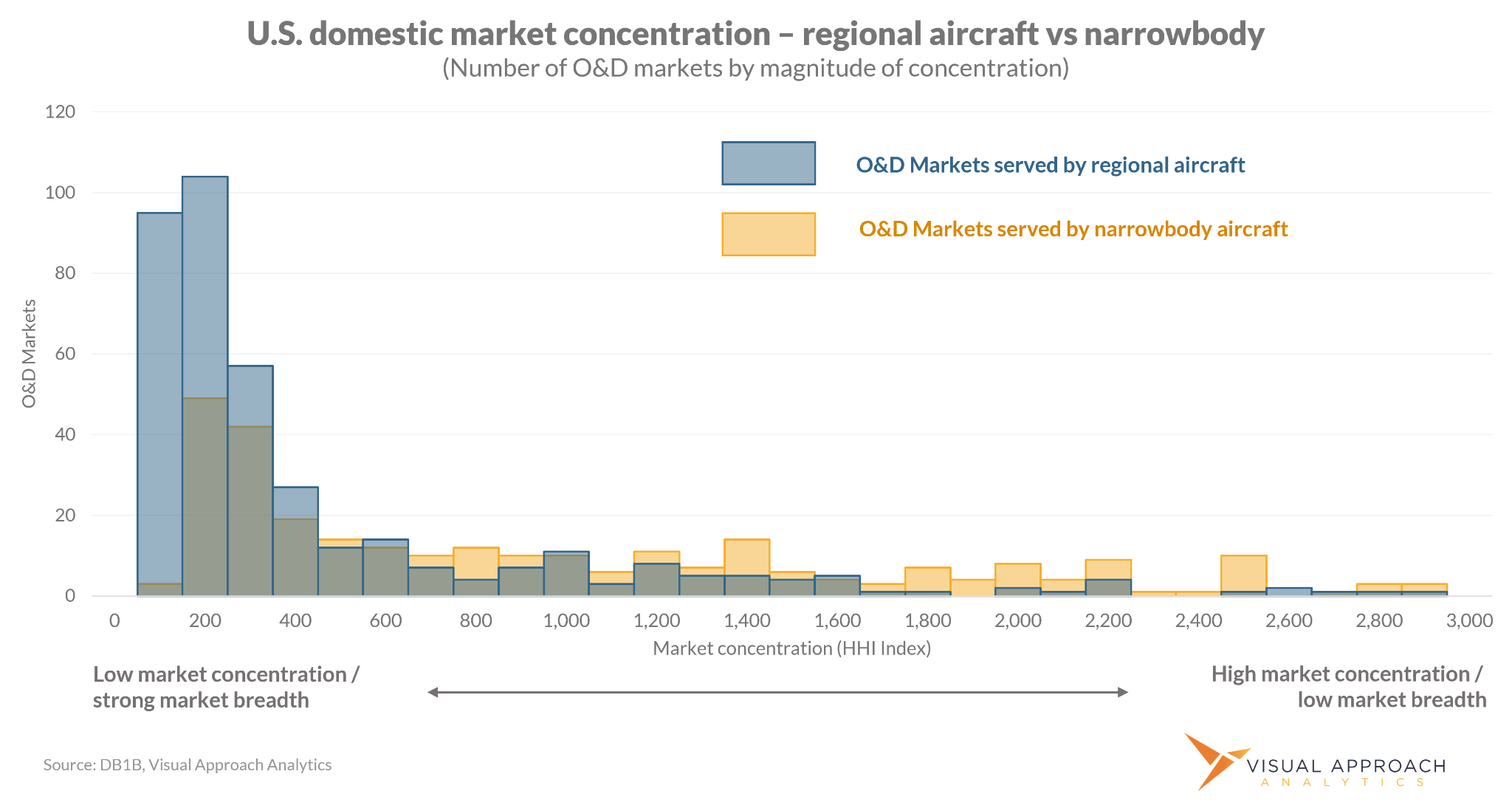
The breadth of an airline’s network can be best described by its market concentration. The higher the market concentration, the more passengers will be required to find alternative airports to complete their travel. This becomes critical for small and medium-sized communities where larger aircraft may fly to the vacation hot-spot; however, any other travel requires a drive to the larger airport.As such, the competitive nature of a market to capture the business traveler for an airline can be illustrated by market concentration. To measure concentration, we use the Herfindahl-Herschman Index (HHI), a long-standing metric comparing the market size to the market breadth. In the context of air travel, a higher HHI indicates passenger traffic with few options, whereas a low HHI indicates strong market breadth and a diversified network.Whencomparing HHI values of actual itineraries flown during Q2 2021, the competitive nature of the regional network stands out. In markets where regional jets were a part of the itinerary, market concentration was one-fourth of the itineraries operated by narrowbody aircraft. This staggering increase in market breadth the regional aircraft illustrates just how competitive a full network can be, once travel expands beyond the few leisure destinations.
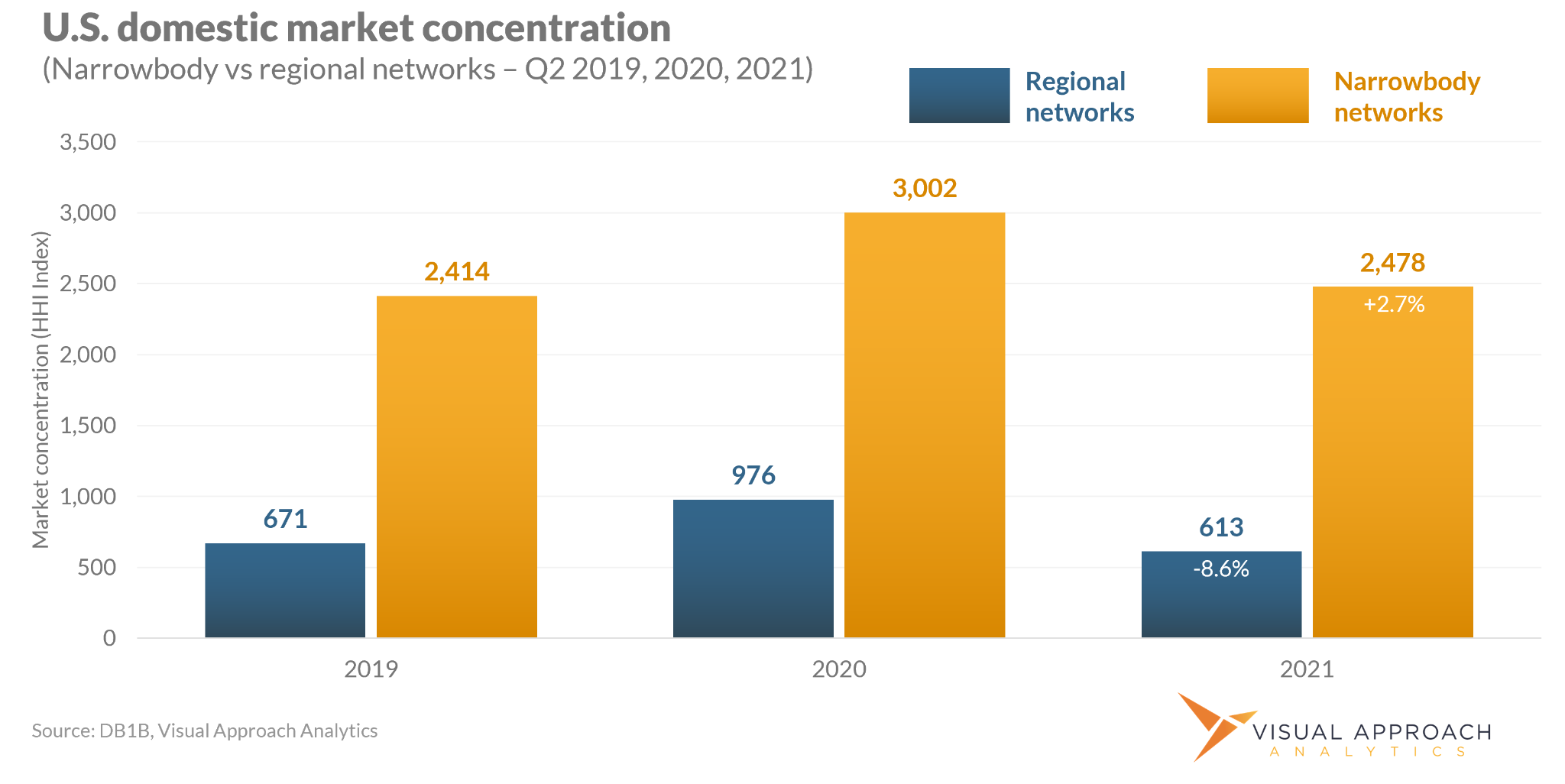
MORE PASSENGERS RELYING ON REGIONAL AVIATION
Over the course of the pandemic, the market concentration for narrowbody aircraft has further increased, reflecting the increasing leisure demand and fewer connecting options. Compared to 2019, narrowbody networks have increased network concentration by 2.7%.
Conversely, the reliance on the regional aircraft to maintain a competitive network has increased. Market concentration of itineraries involving regional aircraft fell by almost 9% since 2019, showing how much more passengers rely on regional aviation to travel to all but the most popular destinations.
PREPARING FOR BUSINESS TRAVEL GROWTH
Today, with the recovery in the high-value business and international traveler just beginning, this competitive network advantage the regional airlines bring has not yet been realized. Further, a pilot shortage impacting the regional airlines is putting pressure on available capacity to maintain this low concentration and high market breadth.
These two factors are working together to create a shift toward the leisure passengers who have returned, at the risk of not being competitive for the business travelers who are about to return.The result is difficult to see from within a currently depressed business travel environment, however, the airlines which maintain and grow their regional networks today will be in a position to corner the business travel market tomorrow.
Just as network connectivity was paramount in 2017, so too will it be paramount as the recovery continues. Market concentration for larger aircraft continues to increase, but it is up to the regional networks, which have increasingly been relied upon, to maintain a connection to the world’s air transportation system. The competitive advantages are only set to continue.
We are happy to bring you this special contribution from Courtney Miller, Founder and Managing Partner of Visual Approach. Courtney has over 20 years of aviation analysis experience. A particularly talented storyteller, he finds insights and trends in the aircraft, network, and financial segments of the industry and presents them in an intuitive way. His data and analysis can be seen regularly in The Air Current and Cranky Network Weekly. You can contact him at: courtney@visualapproach.io, and learn more about Visual Approach Analytics at: https://visualapproach.io.
Contributor: Courtney Miller, Founder and Managing Partner of Visual Approach
8 MIN.- Log in to post comments
THE COMPETITIVE ADVANTAGE OF REGIONAL AIRCRAFT

2017 was a different time. Barely five years past, the intense competition for the business passenger seems a story for a bygone era.
In the world’s largest market, the fight amongst the U.S. network airlines was for the high yield passenger. Increasing connectivity brought new corporate accounts, higher fares, and increased profitability. There was no better place to find these advantages than in the regional networks.
REGIONAL CONNECTIVITY SURVIVES AND THRIVES
In April of 2017, United Airlines made a decisive move to increase its competitive network by adding 65 50-seat CRJ200 aircraft from Air Wisconsin to its United Express fleet. Contrary to the long-expected sunset of the 50-seat jet, the ability for the aircraft to increase connectivity through United’s Chicago and Washington D.C. hubs proved critical in the fight for the business passenger. The fight for the business passenger, network connectivity, and higher fares reached a fever pitch.Of course, March 2020 changed everything. The idea of optimizing revenue on full aircraft gave way to empty seats and a scramble to save costs. Even as the first signs of the recovery started to appear in Summer 2020, the business traveler was nowhere to be found. Leisure travel ruled the skies, and the airline networks adjusted quickly to accommodate. Today, regional connectivity continues, even without the highly sought-for business passenger who so demanded the service.
It is through the lens of connectivity, and the competitive advantages which were once so highly sought, that we assess the impact of the regional aircraft through the drastic changes of the pandemic.
Beyond the fact that regional aviation was able to maintain connectivity during the most difficult times, and even though we are in an early recovery phase today, we now look to the future, and how regional aviation is expected to, once again, become the competitive differentiator in the United States.

A NEW NICHE FOR REGIONAL FLEETS
For airlines around the world, the objective of Spring 2020 was brutally simple - survive. As air travel plummeted 97% in April, entire fleets of aircraft were parked in a bid to save precious cash. As larger mainline aircraft which remained active found themselves flying with mostly-empty seats, the protective role of the country’s regional aviation network became apparent
Despite the unprecedented drop in travel demand, the air transportation system in the United States maintained its connective integrity, driven largely by a regional fleet. Yet, as critical as this essential service of maintaining connectivity amid a crisis may be, it is not the core role of regional aviation. Regional aviation exists to compound airline presence, to be a competitive instrument, and most importantly, to be profitable.
Even as the demographic of the U.S. domestic traveler has become increasingly leisure-oriented, so too have the networks shifted to larger aircraft in order to connect many vacationers with the few vacationheavy destinations. Tourist destinations such as Florida, Colorado, and Las Vegas saw robust recoveries, driven by larger jets full of passengers paying low fares. Meanwhile, the high-yield business traveler remains elusive.
For a regional industry so dependent upon the value brought from connectivity rather than simply discounted fares, the slow return of the business traveler might seem concerning. However, no evidence suggests that ultra-low business travel is here to stay.
Leisure demand has recovered, fulfilling much of the demand present prior to the pandemic. However, the long-awaited real recovery is expected to be business and international demand-driven, where the greatest opportunity for regrowth remains.
Analysis of market concentration strongly suggests that the regional aircraft in the United States will once again signal a strong competitive advantage, just as it did in 2017.
This anticipated growth in business and international demand is highly dependent upon network connectivity - precisely the competitive advantage brought by a robust regional network.


The breadth of an airline’s network can be best described by its market concentration. The higher the market concentration, the more passengers will be required to find alternative airports to complete their travel. This becomes critical for small and medium-sized communities where larger aircraft may fly to the vacation hot-spot; however, any other travel requires a drive to the larger airport.As such, the competitive nature of a market to capture the business traveler for an airline can be illustrated by market concentration. To measure concentration, we use the Herfindahl-Herschman Index (HHI), a long-standing metric comparing the market size to the market breadth. In the context of air travel, a higher HHI indicates passenger traffic with few options, whereas a low HHI indicates strong market breadth and a diversified network.Whencomparing HHI values of actual itineraries flown during Q2 2021, the competitive nature of the regional network stands out. In markets where regional jets were a part of the itinerary, market concentration was one-fourth of the itineraries operated by narrowbody aircraft. This staggering increase in market breadth the regional aircraft illustrates just how competitive a full network can be, once travel expands beyond the few leisure destinations.

MORE PASSENGERS RELYING ON REGIONAL AVIATION
Over the course of the pandemic, the market concentration for narrowbody aircraft has further increased, reflecting the increasing leisure demand and fewer connecting options. Compared to 2019, narrowbody networks have increased network concentration by 2.7%.
Conversely, the reliance on the regional aircraft to maintain a competitive network has increased. Market concentration of itineraries involving regional aircraft fell by almost 9% since 2019, showing how much more passengers rely on regional aviation to travel to all but the most popular destinations.
PREPARING FOR BUSINESS TRAVEL GROWTH
Today, with the recovery in the high-value business and international traveler just beginning, this competitive network advantage the regional airlines bring has not yet been realized. Further, a pilot shortage impacting the regional airlines is putting pressure on available capacity to maintain this low concentration and high market breadth.
These two factors are working together to create a shift toward the leisure passengers who have returned, at the risk of not being competitive for the business travelers who are about to return.The result is difficult to see from within a currently depressed business travel environment, however, the airlines which maintain and grow their regional networks today will be in a position to corner the business travel market tomorrow.
Just as network connectivity was paramount in 2017, so too will it be paramount as the recovery continues. Market concentration for larger aircraft continues to increase, but it is up to the regional networks, which have increasingly been relied upon, to maintain a connection to the world’s air transportation system. The competitive advantages are only set to continue.
We are happy to bring you this special contribution from Courtney Miller, Founder and Managing Partner of Visual Approach. Courtney has over 20 years of aviation analysis experience. A particularly talented storyteller, he finds insights and trends in the aircraft, network, and financial segments of the industry and presents them in an intuitive way. His data and analysis can be seen regularly in The Air Current and Cranky Network Weekly. You can contact him at: courtney@visualapproach.io, and learn more about Visual Approach Analytics at: https://visualapproach.io.
Contributor: Courtney Miller, Founder and Managing Partner of Visual Approach
8 MIN.- Log in to post comments

 24
24
































